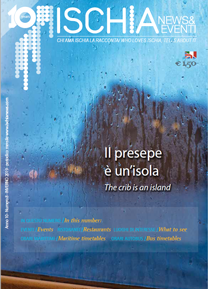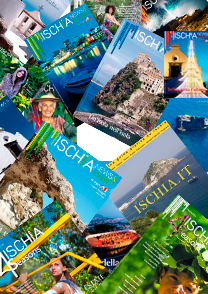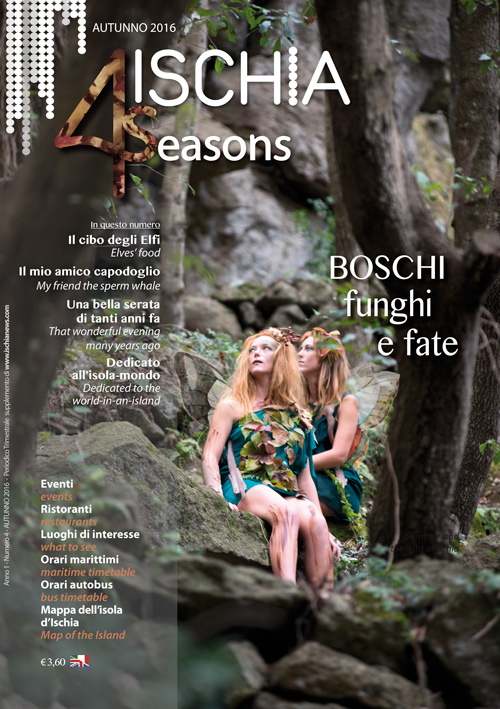Attività
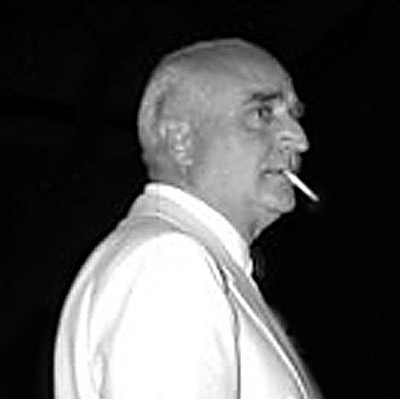
Angelo Rizzoli was born in Milan on October 31, 1889 and died on September 24, 1970. Editor, film producer, patron, titanic character.
His life was exceptional: from the orphanage Martinitt to the world of high finance. He knows the most important people of his time, he builds an empire of immense proportions.
He turns to gold everything he touches. He creates around him a legend. Timely, practical, respectful of the intelligence of others. He knows he is the point of reference for people who frames him as "benefactor". He never forgets its origins and social commitment is a natural way of being.
"Generosity" is perhaps the word that best fits his personality.
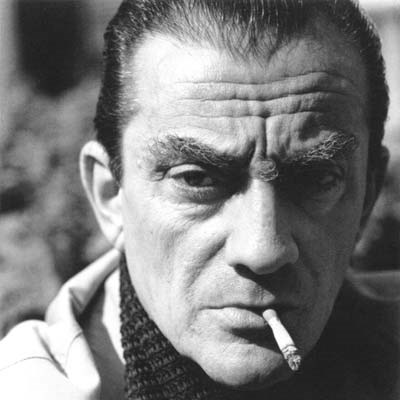
Luchino Visconti was born in Milan in 1906 and died in Rome in 1976. Of aristocratic origins, with a passion for the movies in the '30s: during a stay in Paris, he met Jean Renoir and became his assistant. He made his debut as a director with "Obsession" (1942), which transfers on island backgrounds the novel by James M. Cain's "The Postman Always Rings Twice" by returning to the physical regime of two actors like Clara Calamai and Massimo Girotti, placed in unusual environments in a story full of sexuality, he fires breaking work disliked by the authorities, expression of new way of understanding cinema.
The most fertile period of creativity of our closes with "Rocco and His Brothers" (1960), summary and summation of his art expressed in the form of a melodrama with bright colors, where he tells of the disintegration of a family of peasant in contact with the city. Mindful of Mann and Dostoevsky, the Milanese places his tragic characters between Myth and History, thus giving us unforgettable images.
From here on, the indisputable teaching of the Milan filmmaker will bend operations more or less way: not to miss this wonderful outcomes ("The Leopard", 1963, where nostalgia and ideological awareness fruitfully intertwined in a story impeccable under the figurative aspect) or otherwise of unusual breath (in '73, a "Ludwig" night and ghostly, swollen with rain and dismay, crossed by gloomy forebodings mortuary), but the aesthetic side and bourgeois - that earned him the pungent title of "Duke decorator" - will ultimately prevail.
Remove from heat contingent of political controversy, he will return to being director rather than author: illustrator of great rank for an educated audience and demanding, unfortunately more and more away from the flow of history.
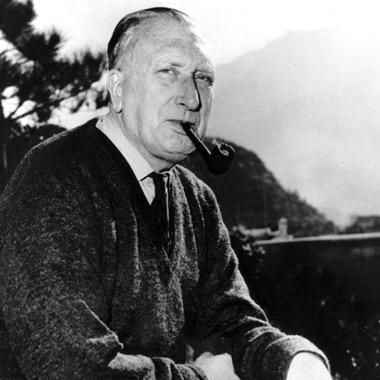
William Walton was born in Oldham on March 23, 1902, he received the rudiments from his father and attended the choir of the Cathedral of Oxford. His education was essentially self-taught, making his debut as a composer at sixteen with a late-Romantic Quartet flavor. It recognizes a more avant-garde language in the compositions of the '22-'23 (Quartet, Toccata). Façade (1923 and subsequent revisions)
Ischia rewarded the activities of the great composer with the trophy "Onofrio Buonocore" and a concert event held in the Cathedral of the Aragonese Castle (1982.
Sir William Walton died in Ischia on 8 March 1984 and his ashes buried in his mansion, now open to the public thanks to his wife Lady Walton.
.
.
.
.
.
.
.
Bolivar Patalano
Luigi De Angelis
Francesco De Angelis
Aniellantonio Mascolo
Vincenzo Funiciello
Michele Cocchia
Clementina Petroni
He was born in Forio on 2/14/1901 from a family of poets and patriots, the tenth of fourteen children. At the age of twenty, he emigrated to the United States where he does different trades to live honestly. Following a serious accident he is interned in a psychiatric hospital where learns to model statues with crumbs of bread, soap and potatoes. Meanwhile, the deceased father and brothers, believing him dead, have confiscated also his share of the inheritance. Other properties end up in the Church. He returned to Forio in 1951 in the period in which artists and intellectuals flock there from all parts of the world that crown the great Anglo-American poet WH Auden, who had elected to his home after the end of World War II. To experience he began painting in the abstract, he exhibited his paintings in the entrance hall of the palace in Corso Umberto I, but he does not sell because it was too forward of his countrymen. He changes kind, to the figurative one, he dedicates himself to portraits, covers all of those who want to put care to give a psychological dimension to the images. He works tirelessly and so now we have a never-ending gallery of portraits of great and small, but all interesting, which then crowded Forio. His art can be defined as material in ways that critics have called "action painting". Recently he has resumed happily primitive abstract ways. He died in 1981.
He was a primitive artist who aspired to the local traditions and consecrated by popular customs. In his works idealized reality, and his characters were conceived as shepherds going about daily activities. He is able to express the essence of the island of Ischia, with a manner full of color and merriment.
Francesco took his first steps in painting under the guidance of his father Luigi. Soon taking over the art, on canvas he expresses his repressed feelings, his visions, his dreams. The paintings show a very high poetry that puts them on par with the best works of metaphysical painting.
He was born in iIschia in 1903. At the age of 20 he worked as carpenter, in 1929 he left to Siena, registered at the Academy in plastic and ornamental design. Plastic was a passion for him and so he decided to become a sculptor. The Mascolo in his work told the story of the people. In his woodcuts is a religious geometry, a solemn composure.
He was born in Ischia in 1905, he returned to the school of instinctive painters whose Ischia was rich. Son of a large family that could not send him to study, Funiciello remembered with gratitude the Ricchizzi landscape painter who discovered his interest and was his disinterested teacher. Funiciello no longer used the brushes, when in Berlin, where he returned after the war, he saw on the floor of a tailor a wealth of colors in the scrap of cloth, took the desire to use what awaited the broom, was born the idea to what the painting was supposed to be the island novelty: the collage. He wrote his paintings with scraps of cloth, a big success which ensured a quiet comfort.
His landscapes and interiors, where the agreement of mosaic colors of cloth echoing tones look forward to his last way a painter with brushes, compounds with a rigorous perspective that cost him much more than painting in the traditional way.
Michele was born in Avellino on 16.11.1939 and since he was a young man began to attend some art shops in the area directed by famous masters.
favored apprenticeship craft away from conditioning the teaching academics. The freedom to express themselves without schematic constraints, Michele finds his way from the start a painting that allows him to reach in a few years and characterization own style.
He moved to Ischia in 1957, immediately in contact with a Mediterranean nature which enhances the light and colors of the landscape intensive creative and exhibition.
Ischia soon became his favorite land and his muse.
The blue sea, the sweetness of painting full of color effects, subtle nuances make our unsurpassed a master of landscape and especially the marine environment.
It is to Michele Cocchia " a serene painting, an investigation into the truth everyday without complicated meanings or false cultural discourses, a truth that comes through careful observation, specifies that allows him to capture the moment or the ray of sunshine affect the shape of the framework ....”
Michele Cocchia has participated in numerous art exhibitions gaining acclaim and recognition everywhere.
Info
Address: Via Vittoria Colonna, 23City: 80077 - Ischia
Mob.: +39 3485148759
e-mail: This email address is being protected from spambots. You need JavaScript enabled to view it.
Web: www.michelecocchia.it
Info
Address: Castello Aragonese, 5City: 80077 - Ischia
Tel: +39 081983224
e-mail:This email address is being protected from spambots. You need JavaScript enabled to view it.
The art of weaving has ancient origins and over the years, becoming more and more wealth of the few, for the lack of interest of the younger generation.
On the island of Ischia, before machining, the vegetable materials, used for the plot, are subjected to various treatments, which, depending on the material, provide for the defoliation, the decortication, which serves to give a different color or even cut into thin strips. Once completed this preliminary work, the material is treated with sulfur vapor, which frees them from parasites and bleaching. For Palm Sunday, before the Easter holidays, intertwine hold palm leaves, which are exchanged as a sign of peace.
Many ancient island crafts and therefore Forian activity centered around the wine production that over the years committed the majority of the population. It was specialized activities, carried out by the "master" or stallholders, a real culture of gear, precise gestures and wise, as in the case of coopers, the ‘parracinari’, the canestrai, even rituals, as evidenced for example by nevaioli.
The art of weaving
Craft and seasonal vendors
Work shops
The art of weaving has ancient origins, and over the years, has become more and more wealth of the few, for the lack of interest of the younger generation.
On the island of Ischia, before machining, the vegetable materials, used for the plot, are subjected to various treatments, which, depending on the material, provide for the defoliation, the decortication, which serves to give a different color or even cut into thin strips.
Once completed this preliminary work, the material is treated with sulfur vapor, which frees them from parasites bleaching.
The craftsman working with patience the material, creating hats, fans, baskets, wall coverings carboys, bottles, canisters, known in forian dialect as canisto and still the pot and maruffo. The pot, until the sixties was used to catch the fish and maruffo to keep them alive in order to sell at a later date. The materials used for the construction of these two gears were cane, rush, mastic trees, heather and tamarisk.
For Palm Sunday, before the Easter holidays, intertwine hold palm leaves, which are exchanged as a sign of peace.
In addition to the craftsmen who worked in their shops, there were other figures of street vendors, who enlivened the forian streets and offering products or services. It was mostly male figures, rarely were women.
An exception was the ‘capera’, who went from house to house to comb older women. Other job related to walking hair was that of females Capellaro who moved from house to house in the country with a shoulder bag announcing his presence to the cry of “Who want a female Capellaro?”: the man buying women’s hair specially who cut them or patiently gathered those lost in exchange for a few euros needed to buy clothes or anything else.
Given the widespread poverty, very important were the "tanners", able to adjust various objects that many could not afford to buy.
Among these, the ‘conciapiatti’ or ‘conciatiane’ that often were also conciaombrelli. The women turned to him especially to repair broken clay dishes. The conciapiatti remitted together the fragments sewing them together with iron yarn that did pass through holes drilled in precise points with the drill; clutching both ends of the iron with the pliers and finally covering the holes with clay applied with the fingers so as to hide any sign of suture.
The grinder went around with his cart, he stopped in the streets and attracted the attention of the inhabitants to the cry of "It is the grinder" and turning on his boneshaker. Soon arriving the grinder there was a a crowd of merely curious or people carrying knives or scissors to be sharpened.
The vendors often roamed the country only once a year, as the seller of straw, which bore their cart pulled by a mule to sell straw for the sack, ie corn leaves with which they filled the bags of beds , mattresses than once, called in the local dialect e’ sbreglie.
The man who sold the sea net came in the spring in a wicker basket holding under his arm, said spasella, wore sea algae similar to lettuce leaves, used for its healing properties.
The ‘basketers’, weaving plant materials, realized various objects, including the typical basket, also called canisto, coverings, bottles and carboys, hoods and cufanelle, women carried baskets on their heads filled with vegetables or vegetables used for the transport and sale of snow. Even today the island baskets are constructed using traditional techniques handed down from generation to generation.
Each basket has a specific function: the nassella in the local dialect 'u nassiell, is a kind of drop-shaped tray made with chestnut branches and broom and twisted willow branches to keep the board, which is used for drying in the sun figs or tomatoes, another example is the cufaniello 'and ll'acene, made of branches of myrtle and olive trees, which serves as a filter during winemaking.
A seasonal job and stallholder was that one of nevaioli or nevaiuoli, existing until the first decades of the last century. Workers were involved in the collection and sale of snow that fell during the winter in the woods at the foot of the Falanga Epomeo. In the event of heavy snowfall, the auctioneer played the tofa, a large shell, to summon the nevaioli who gathered in the center of the village of Fontana (Fontanesi were in fact the real masters in this business) wearing the traditional costume: trousers in bottle green, velvet breeches, long socks of cotton, heavy shoes, jerkin of brown cloth, wool cap. Armed with shovels, hoods and sticks, then went into the woods, where, after a bonfire with wood collected in shelters dug in the tufa rocks, collecting snow and hail and treading with sticks piled in of pits dug in the ground, and finally covered the hole with leaves of chestnut trees, dead wood and soil.
After the work, the nevaioli gathered around the fire to consume the meal of soup, boiled beans, salami, bread and light wine.
Even today, crossing the forest of Falanga, you can see the mass of snow, also known as "neviere", and temporary shelters dug in the rocks of green tuff functional semi-rural seasonal activities, such as just the collection of snow or cutting of wood used to support the backs of the screws. In the cavity, the snow kept until the arrival of summer, when it was sold in exchange for a few cents to make ice cream to cool drinks, especially wine. The collection and sale of snow during the summer months, a respected real ritual: the nevaioli, who were often ciucciari, pick the snow from it and carried on the backs of mules faster wrapped in cloth inside casings of reed lined and covered with chestnut leaves; once arrived in the towns of the different houses of the island, ran through the streets shouting "whites, 'snow' u nevaiuolo."
The snow collection on Epomeo, along with wine, meat and bread, was offered by the islanders to King Ferdinand IV on the occasion of his first visit to the island in July 1783. Some resolutions conserved in the municipality of Forio from the last decades of the nineteenth prove the existence of a duty on the sale of snow, an entry that was not always guaranteed, however, as not every winter snowfall occurred on Epomeo.
Along the country roads opened several shops, often narrow and crowded full of objects and tools, where craftsmen spent their days intent on their work.
Among the most popular shop workers, in addition to the master cooper, whose tells the section devoted to viticulture, included the master shoemaker, the watchmaker and stagnaro.
The stagnaro, or tinker, was a craftsman, handyman, to whom were worn tools as diverse as the pump to spray copper sulphate to the hoe to the pan, also built the pipes of the houses and on the occasion he was also glazier.
An original figure was that of the packer packs. His shop was full of paper, cardboard and string. There were addressed, among other things, the people who wanted to send a package to the family emigrated to America. It was necessary to first choose the appropriate container to avoid paying too much: the content were wrapped with foil and tied with string, the package was closed along the edges with glue by mixing flour and boiling water.
Disease
Death
Magical figures
When doctors with "official" cares could not heal the sick, recourse to alternative treatments and figures.
Treatment with leeches was entrusted to a woman named mammena (midwife) that was also attended by women during childbirth. The leeches were closed in glass jar and applied behind the ears.
Failure to cure the extreme remedy that has been used was the rassa. The relatives of the patient were knocking on homes asking for a sign of interest and solidarity collected lard, drops of oil, wheat seeds, some rock salt, vegetables, legumes. These gifts were boiled and poured into a hot bath which was immersed in the patient.
An inevitable rite and still in use was the vigil of the deceased. Death occurred, the relatives of the deceased prepared the room for the wake. The dead man was lying on his bed wearing the dress groom, at the corners of the bed four candelabra were placed along the walls of the chairs were arranged for visitors. On the wall by the side of the head of the deceased, was spread a white sheet, the center of which stood a cross made with a black cloth.
In the month of the dead, November, knocked on the doors of the houses a man bent and emaciated pale face and red eyes, with a knapsack on his shoulder. It was the spiritiello which was to "refresh" the souls of the dead. After reciting prayers and singing long scary aching souls, gathered into his bag offers family (beans, bread, dried figs), and continued his tour.
Even in Forio, as in the rest of the island and in many other areas of the South and of Italy, traditional stories testify the existence of beliefs about magical figures and imaginary creatures. Among the most common there are munaciello, the ianara and the werewolf.
The munaciello,The munaciello, home spirit, ambiguous dispenser of fortune, could occur both in human and animal aspect, such as a white rabbit or a goat.
The ianara was a witch, to which were attributed innate evil and supernatural powers, including the right to cause a 'ndressia, ie conflicts between couples and between parents and children, and to prove u scartiello, the hump. According to the folk tales ianara, woman almost normal during the day, at night it became dangerous, she infiltrated and hid in the house of the person waiting to damage and to land on the belly until he gets out of breat.
The werewolf,mythical figure typical of peasant and pastoral societies was recurrent protagonist of scary tales of family or friends. He was a man who in the full moon is covered with hair and wandered the countryside until dawn howling like a wolf. According to some versions of the legend, it is a disease, a type of asthma, in this case, compared to ianara, to whom the werewolf had in common the birth on Christmas Eve, it was a harmless figure as ill, instead bearer. Other versions instead describe it able to tear other human beings.
.
"A mascarata ',' A 'Ndrezzata" "A vattute e ll'astreche" constituted the major folk dances tied to aspects of community life of Ischia now become folk dance through the creation of specialized groups.
The origins of the dance "A mascherata" are still unclear: according to some sources has Greek origins, according to other Spanish as a Spanish resort this dance was danced on Easter Monday or the feast of St. John, the same Holy patron of Buonopane.
However, there are several hypotheses regarding the origin of the dance. One of these, which is a combination of myth and legend, the dance has its roots in a feud between the inhabitants of Buonopane and Barano dating back to 1500. This is documented in a manuscript found in the sacristy of the church of San Giovanni Battista in Buonopane, which tells of the coming of the Bishop to calm a dispute between the inhabitants of Buonopane and those ones of Barano caused by the contention of a girl between two people belonging their respective countries.
A Vattute e ll'astreche
Folk dance that revives the creation of the domed roof. A vattute e ll'astreche - typical Ischian dance, as in most of the Mediterranean basin, they used to build up to the 50s the roofs of houses in small barrel-shaped or hemispherical domes, called Carusiello, drawn the Greek architectural culture - Arabic. The construction was done according to standards defined, the outline was prepared with frame chestnut poles on which they were resting the "penicillin" (bundles of dried vines), the surface is covered with clay (clay or other material of lava) on which were supported the pumice stone (volcanic stones are also light but strong and compact). After this stage, the owner of the house hoisted a flag up early, it was a sign that family, friends, neighbors, classmates were called to gather up, ... well almost the entire country was involved and happy to contribute to the final realization of the new house. Everyone who attended brought with them a strut pole of poplar with a larger part, this tool was used to compress the lapilli wet lime white living up to make it waterproof. This enormous effort lasted for three days, day and night without interruption. The puntunari to alleviate these huge labors, sang told stories, nursery rhymes, ... usually those who could play any instrument, flocked.
The houses now are built of reinforced concrete, a different story between illegal and devastation of our land, fortunately this tradition is revived with this folk dance and for us that dance it seems that we build a house, given the enthusiasm and passion that we put into this dance. The dance sequences are as follows: it starts with a propitiatory song: Jesc sole, then saluta allu padron, to reach the gossip prince of our country that Nu sacce che succise a Murupane. The master mason, in order not to lose the rhythm repeats from time to time: one, two three, if someone lost the rhythm, since they all had the same names, the head master called them by nickname and these join at a rate of others, if drinking and eating were slow in coming it was customary to remember the wickedness with a song: all of them sing miezziurn SUNAT. Then some rhyme to get a new toast, this time quoting the vegetables. Following the hymn of puntunari Sartulella ending with the Tarantella lu Ceras. Once completed the roof it used to throw the grain from time to time to avoid the appearance of small cracks. Meanwhile, the women, took delight in the kitchen preparing delicious dishes and loved by all.
The puntunari after three days were happy, because finally they ate well and plentiful, all flocked to this final dinner, no one had economic compensation for this work. The dishes, required and desired, were Cave Rabbits stewed in a tomato, wine and herb sauce and the zeppole (doughnut traditionally made at Carnival typical of Southern Italy). The cave rabbit with the "chienga" was killed and left in the wind for one night, the next day was cut and browned in pork fat with garlic cloves, once it reaches the pink color you put the white wine and add the inner wrapped around the parsley, pepper and other spices, just was going to wear the white wine is added the tomatoes and basil prunnella or pointed. The rabbit was cooked in shards of clay and wood. The sauce that was obtained was used to season the pasta. Zeppole, naturally leavened for hours after mixing, once grown were cooked in hot oil and took on many different shapes, once cooked they threw on a layer of sugar. The men commented on the dishes and expressed their opinions on the food, all washed down with wine production (the house owner) made from grapes biancolella, zi bacco and Forastera white wine, while red was made with grapes foot red, Guarnaccia, cammamele, ... After the great feast we started to dance (tammurriate and tarantella) and sing for a whole day with a parade of boats or baskets full of zeppole. People were happy because another fellow had managed to build a roof and then the nest where prosperity to the family. Our wish is to buy a house in Carusiello and turn it into a museum of rural civilization therefore we ask you all to help us to realize this dream that allows us to protect a heritage that is slowly disappearing. Dance of the Folklore school.
The 'Ndrezzata
The typical dance of the island of Ischia. The 'Ndrezzata of 1948. The theories regarding the origins of this dance and its importance on the island are numerous. There is who says, for example, which has Greek origin, and who sees its roots in Spain. It is well known that similar dances are typical in Egypt, Sudan, Poland and various Italian locations: Sorrento, Arezzo, Sicilia. The historical sources available are two: a text preserved in the Antoniana Library of Ischia where is
cited an ode of 1600 by Filippo Sgruttendio in vogue in Benevento: "a Cecca - invitation to see the Ntrezzata" a manuscript, found in the sacristy of the church of San Giovanni Battista in Buonopane, which tells of the intervention of the Bishop in order to resolve a dispute (which also caused the deaths) among the inhabitants of the district Buonopane and those ones of Barano. It is said that two men, Rocc'none from Barano and Giovannone from Buonopane, courting the same woman. Rocc'none was a sailor and during one of his travels he had bought a sash (or shawl, there are doubts about) as a gift to his beloved. No one else had the sash, so when the betrayed lover saw Giovannone wear it, challenged him to resolve the matter between men near the bridge that divides the two countries. Around 1930 was made the first costume, inspired by the past of ordinary people, mostly fishermen. The fabrics were poor and to save the stuff the sleeves of the shirts were sewn to the cloth waistcoat, secured by a double row of buttons; pants came below the knees, with strings connected end to end and were shod leather sandals. In the late 50s Ischia is subject to a strong focus by many tourists. Among these families, Rizzoli and Malcovati, particularly interested in local folklore. Recognizing the 'Ndrezzata a cultural value and a valid entertainment, proposing a partnership between the different interpretations of the island. From Trallera of Fontana import the parade or serenade, from the Ndrezzata of Campagnano the sermon, from Braided of Forio fisherman costumes, from Mascarata of Buonopane the choreography of the dance. To the costume, inspired by the Italian flag, are added to the collar and the ball to the hat, are sewn velvet (green and red) and leather shoes are the shape of a courtier. From the folk tradition 'Ndrezzata becomes entertainment with the school of Folklore.
'Ndrezzata Gruppo Folk
Official folk dance group of Ischia with 8 dancers ('ntrezzaturi), four players, two wind instruments (clarinets) and two tammorre.
Info
Via San G. Battista, 15Tel: 081 905164
Bus lines: >> CS, CD, 5
Popular games of children and young people of Forio, as well as those ones of the whole island, were made with poor materials easy to procure, often related to the season or improvised. Only the biggest ones could afford to play with money. The favorite haunts were open spaces, such as squares and district courts.
Some games are not typical of the island, if not in vernacular: the circle, the strummolo (the top)); ‘u tirapreta (the sling) built with an oak branch and recycled materials (the inner tube of bicycle the springs and the upper of an old shoe to the sheath of leather);‘u chirchio pè vucià (the circle for cruising), mostly of wood recycled from the vats used for the grape harvest, only in rare cases of iron hopscotch,mainly practiced by girls; bat and Pinzo, a sort of baseball played with a bat made from a branch of oak or rowan and the Pinzo, a piece of wood shorter, smooth and sharp that resting to the ground and hit the tip, and rose was beaten with the bat to be launched as far as possible ‘a rucilià (rolling), a race from the top of a pile of soil ‘a carruzzella,a kind of wooden cart with wheels.
In other games there were common objects, found easily at home, outdoors or made available by nature depending on the season. With the kernels of medlars, for example, the boys built the castles, side by side, with a core they competed to target and destroy the most number of castles. The girls were playing instead of the fountain, which threw the bones of medlar trying to get them to fall into the fountain.
Among the games played indoors include those made with walnuts, called hazelnuts, linked to the Christmas period at the end of Christmas dinner hazelnuts were given to children who harvested them in cloth bags. The boys played the game of castles, the girls in the game of fountain or finger inside. In this game the hazelnuts were thrown on a table or on the floor, each participant in turn had to pass a finger into the gap between two nuts trying not to touch them and then gave a tap hazelnut so as to touch each other, if he could touch only the hazelnut, it won one. Always the hazelnuts were the raw material of another game, which is to launch a career to break down the other line. In May, the nuts were replaced by empty cartridges collected in the woods: the shells were lined up and tried to shoot them down with the launch of two cartridges inserted into one another.
In the square in Panza a popular pastime among young people was the game of knights, in which were two roles, the horse and the rider: the boys drawn as horses were placed with their face against the wall, a knight around his waist with his hands and the other rode on the horse taking a running start, piling up to six together. Also in the square Panza, paved with basalt to trachyte of Vesuvius, people played marma: people throw a coin in the air, won the player who dropped the coin closer to the center of the plate (the marma). If the coins missed people used the buttons.
The coins were part of the other two games, reserved for older kids: the launch of the iron ball and azzeccamuro. The launch of the iron ball each player plunged a penny to half in the ground and take turns throwing an iron ball trying to shaken out as much money as possible. Theazzeccamuro took place in a sunny zone sheltered from the wind: each participant threw a coin in order to make it as close as possible to the wall. The winner collecting all the coins thrown. The wall could be replaced by a line marked on the ground, when a player could drop the coin in the middle of the line it said that he had "split the sign", but if the money came out of the line the player had left out the "schero".
A variant of azzeccamuro was ‘a barracca. Based on the coin falls closer to the wall or beyond the line set out a classification: the first took in hand all the coins and, after having manipulated the launch into the air. Won coins falling with his head on the exposed side, while the others were re-launched by the next player on the list until it is exhausted. The game's name comes from the word "’a barracca" that could be given by a participant to invalidate the game in case of suspected cheating before the coins thrown to fall down.
During the winter in the streets, to feel less cold, they played slap: one of the participants had to parry the blows received from others on the open palm under his arm, trying to keep his balance.
A game even more dynamic was the azzancaferro o azzangafierro: a participant was drawn with the task to resume the others were scattered and tried to escape the grip not making touch, touching a gate or an iron object (in dialect "azzancando the iron"), and if the object was made of wood the game took the name of azzangalegname. azzangalegname.
A fun "food" was to racioppare, that is turning through the vineyards from late October to Christmas in search of grapes left on the vine or grape harvest escaped the so-called "tempestina" matured late.
Every year, on a regular basis, Ischia renews its ancient traditions and celebrations. Catholic holidays and farm and sea celebrations and alternate, cold winter to hot summer. The ancient Catholic traditions have altered the face of the island of Ischia, giving its artistic and cultural heritage over seventy churches with saints, revered for thousands of years by districts Ischia. St. Anne, St. Vitus, St. John Joseph, Santa Restituta, are just some of the Saints that the districts, and on special occasions the entire island, dedicate festivities that last for an average of three to five days. Sant’Anna, San Vito, San Giovan Giuseppe, Santa Restituta, are some of the Saints where the roads on the occasion of the feasts dedicate solemn celebrations that last less or more from three to five days.
Especially noteworthy are the religious rituals, the decorations of churches and streets, the air of celebration and the special joy that is expressed by all participants, as if to recall the old value that was given to those feast days and not single representation ritual event. The fireworks are a real treat for the fans of the genre, real races are held every year for the award of the title of theparty with the most beautiful of the fires, digging up part of the rivalry that has always existed between the various municipalities and districts of the country. The ancient traditions of the island of Ischia are also strongly represented in the major holidays of the year, Holy Easter and Christmas. There are many events of historical cultural and religious represented in the six municipalities on the island of Ischia, such as “"The Fish Market on Christmas Eve"”, “Angel Run” and “The Via Crucis” at Easter.

Sant'Anna
City of Ischia 26/07
The Feast of St. Anne dates back to a tradition of the last century. On July 26, of each year, pregnant women went in procession to worship the effigy of the Virgin Mother, that was in a chapel in the Bay of Cartaromana. They were accompanied by a procession consisting of the fishing boats, which for the occasion decorated the hull with boughs and garlands of flowers.
In the early 30s a group of friends had the idea of establishing an award for the most beautiful boat. Afterwards this group of friends joins a carpenter and craftsman who replaces goiters raft of forms and surprising ornaments. A so start the festive procession with floats in sea water. Since then, the party of the sea cliffs of St Anne has a charm all its own, is an event that has no equal in the world, because it uses a scenario that alone would be worth to live forever. The number one of viewers is exorbitant that crowding on the cliff overlooking the yachts in the beautiful bay. They want to be witnesses that the party retains its charm over time, the atmosphere that is created by the burning of the castle and the spectacular fireworks.

St. John Joseph of the Cross
City of Ischia from 04/09 to 08/09
San Giovan Giuseppe was born in Ischia on August 15, 1654 with the name of Carlo Gaetano Calosirto. At just the age of 16 he was welcomed by the Franciscans in the convent of S. Lucia al Monte in Naples, on June 24, 1671 where he made his solemn profession on 18 September 1677 and was ordained a priest. After three years, he asked to be deprived of active and passive voice and devote himself exclusively to prayer and the apostolate, in 1688 he returned to Ischia to assist the dying mother and then to his poor health. Died in Naples on March 5, 1734, in the convent of S. Lucia al Monte. On October 4, 1779 in the Franciscan church of S. Maria d'Aracoeli in Rome, Pope Pius VI declared the heroic virtues of Brother John Joseph of the Cross. The same Pope proclaimed him Blessed in the Basilica of St. Peter on May 24, 1789. On May 26 1839, Pope Gregory XVI canonized this holy son of Ischia, the Church's glory, honor and pride of the Franciscan Order.
In the church calendar, the Saint is honored on March 5, while the festivities in the streets of Ischia Ponte, were held on the first Sunday of September for a period of four days. In these days of celebration, the church is decorated and Masses were celebrated continuously, the relic of the saint is carried in procession through the city streets and sea where the boat with the relic is followed by the fishermen. The festivities end with a fireworks show.

Sant'Alessandro
City of Ischia on 26/08
The historical parade of St. Alexander, on the initiative of a group of residents in the village of Saint Alexander, is a representation in rich costumes of the history of the island, the Greek domination, until the unification of Italy, through the influences of style engraved by various conquerors also foreigners who have inhabited it. Departing at sunset, from the great portal of the Aragonese Castle, accompanied by the flag bearers of some district invited for the occasion and, along the main road through the town center, reaches the port then the District of Sant’Alessandro where we celebrate the Mass in the church dedicated. At the end of the Mass in the small village there is a party with music and drinks offered.
La Madonna Addolorata
Forio from 01/03 to 01/04
Our Lady of Sorrows was initially called Virgin Mary of the Seven Sorrows, but Pope Pius X in 1913 looked at the liturgical feast of Our Lady of Sorrows as on September 15th. Our Lady of Sorrows has her heart pierced by seven swords because seven were her greatest sorrows: the prophecy of Simeon, the flight into Egypt, the loss of Jesus at the age of 12, his journey to Golgotha, the Crucifixion, the Deposition from the cross and burial.
The liturgical feast of Our starts on Thursday two weeks before Easter, in fact, is the solemn enthronement that from the beginning of the novena.
On Friday before Palm Sunday (or sixth Friday of Lent) is a day of pain and sadness because he remembers the pain of Mary, from six o?clock in the morning successive harvest. At 10.00 there is a solemn mass and procession at 11.00 there is the statue of Our kept in the Parish of St. Sebastian, is carried in procession through the main streets of the town. The afternoon of the same day there are the "three hours" of Mary desolate, with sacred songs and moments of reflection on the Seven Sorrows.
On the evening of Palm Sunday, held the traditional "kiss Snow" (people in turn approaches the statue to kiss the mantle).
On Holy Saturday, at the end of the Easter Vigil, the image of the Virgin is crowned with flowers, the singing of the "Regina Coeli" (singing in Latin, which the people of Forio joyfully sings on Easter Sunday during the angel?s run).
The statue of Our Lady of Sorrows is carved into the wood, its coat is pure silk with gold embroidery, in Baroque style.
There are currently three different clothes of Addolorata, one of which is of ancient manufacture and was made immediately after the war (1953) with the help of his faithful, on the cloth are embroidered with the symbols of the "Passion of Christ" ( the cross, thorns, spear, etc.)..
In addition, the statue has in its hands precious objects donated by the faithful as votive offerings. It is said that the statue belonged to a noble Forian family and was donated to the Church.
The author of the statue is unknown.
San Vito
Forio from 14/06 to 17/06
San Vito is the patron saint of Forio. The festival is characterized by two moments that form a single heart. The traditional cultural homage to the patron saint of the faithful in a variety of traditional religious and traditional fair in the center and along the marina, enriched by a series of concerts and moments bands. The celebrations have 14-17 June. On June 14th we celebrate the Masses, in the evening, in the square of San Vito there you have the historical representation of the traditional life of the patron saint and its link with the town. On June 15th , the day of St. Vitus, Masses were celebrated in the time and in the morning a band running through the streets. In the afternoon, the statue is carried in procession through the streets of Forio and the port at about 18:00 the first fireworks show. On June 16th in the afternoon, the saint is carried in procession by sea with the commemoration of the fallen with the participation of ANMI and fishermen association "San Vito" of Forio. Benediction and then return to the town hall square in a new gig. The conclusion of the festivities is marked by a well-known and expected performance of spectacular fireworks, which start at about 0:30. On feast days the country is visited by thousands of tourists and curious citizens crossing the lighted streets and quaint markets stalls.
San Francesco di Paola
Forio from 01/05 to 05/05
About fifteen years ago the celebrations in honor of St. Francesco took place a fortnight after Easter, but often had to be postponed due to bad weather, so here is the decision to celebrate the first Sunday of May. On Thursday evening Mass is celebrated with a preacher come from outside, for the three days of preparation. On Friday, after Mass, the committee organizes a party for the children with the participation of animation. On Saturday afternoon a band passes through the streets of the district, from Via F. Calise continuing toward the viewpoint of Gancia and then arrive in the courtyard of the church. At Mass terminated begins their concert.
On Sunday Masses were celebrated for most of the day, in the afternoon after the celebration of Mass brings the relic of the saint in a procession to the beach where you honors lives lost in the sea placing a wreath at sea and returns to behind. For the detention of the faithful, a band gives a concert at the end of the fireworks show begins.
The statue of the saint is carried in procession only on a few occasions, the next time will be in 2007 will be carried in procession on the occasion of 500 years of his death.

Christmas Eve
Forio on 24/12
In winter Ischia becomes a little crib, the days are characterized by sirocco, the west or the north wind, the three prevailing winds that affect the days of the islanders. Nuts, sweet dried figs in the hot sun of summer, the Rococo, a glass of new wine, a dash of nocillo or homemade limoncello, a game of cards in front of the crackling fireplace, the confusion of the bingo family and other still, are the main features of a company that returns its values millennial friendliness, warmth and tradition. Day by day in homes with small gestures remember the great feast of the Nativity, are preparing Christmas trees, gathers moss in the woods for the crib, you decorate the houses and gardens with thousands of lights, the pipers playing old songs, all become good and kind, in the streets of the small villages there is an air of festivity in the evening we meet to chat, play old songs and strum on the floor of one of the few places open. The major festival is nearby, as Leopardi, in his poems, even for Christmas, the day before the party is certainly the most beautiful and exciting. As tradition begins the night of the twenty-four, for the younger one is up all night to play, sing, dance and tell jokes until dawn, when the country wakes up and finds himself suspended in time to repeat rituals and traditions centennial. The beautiful Forio to the West in Ischia Ponte and Ischia Ponte to the east are already awake before dawn, the squares fill in front of the crowded churches for the celebration of the Christmas novena dawn fishermen sell the typical fish, eels, moray eels , molluscs and fish prized for the dinner of Christmas Eve. In Forio immediately after the procession is traditional to eat pasta and beans and garlic prepared by many volunteers who cheer tourists and villagers. So begins a day of rejoicing that will end in the evening after dinner and bingo with Midnight Mass will announce the birth of Jesus and remember the man and the journey still to go.

The Angel's run
Forio at Easter
The Angel’s run, takes place in Forio, an ancient tradition dating back to the distant 1600. It’s a holy representation that plays the moment of encounter with the risen son of the Virgin Mary. The event is organized by Arciconfraternita of Forio, guardian of the four statues that carry on their shoulders in procession, by tradition, always by the same families for an unwritten law that has been passed down from father to son, and many times because of disputes between lit the families to claim the same.
The statues represented in the procession are: Madonna, the Risen Christ, St. John the Apostle and the Angel. The first three ones were carved in wood by an artisan from Naples between 1756 and 1757, while the Angel was sculpted by Vincenzo Mollica and covered with gold leaf.
On Easter morning, before the start of the procession, the Madonna, with a white veil over her face, and St. John are placed at the crossroads of the main course of Forio. Christ and the Angel at the end of the Mass, go in procession to form a small procession with the standard blue and white plume of ostrich feathers, the cross of the brotherhood and the clergy.
Arrived near the fountain, a choir, made up of powerful voices from the fishermen and the people turning to the risen Christ, sing the "Regina Coeli", thus beginning the function. The Angel makes three bows to the risen Christ and runs to the Virgin Mary to announce the resurrection of his son, arrived at the crossroads repeats the Regina Coeli, by the farmers and the people, at the end of the Angel bowing three times to the Virgin Mary and runs towards Christ. All this is repeated for three times. The last race of the Angel stops under the bell tower of the church of Santa Maria di Loreto and the Madonna and St. John make their way over to reach the statue of Christ. Half way you slide the veil from the face of the Madonna, in representation of the vision of the Son, and the whole course is filled with flower petals thrown from the balconies in a blaze of chants and cheers.
By tradition, the one who brings the plume in procession, must lower it three times without touching the feathers on the ground, so you do not lose the right to lead the pernacchio the next processions.
Video Angel's run in Forio
Photogallery of Angel's run in Forio island of Ischia
Wine Festival
Forio from 04/11 to 30/11
We wanted to celebrate. And feast was, that one of the peasant, true, with the new wine flowed, the burning embers to roast chestnuts and toasted bread with tomatoes and olive oil, the tarantella - and not only - ballad rhythm guitar and piano. And then beans and pizzas for everyone: each, up the short steep climb to get to the cave-cellar, carrying something, like the Magi, because the party was not just the wine.
The Pietratorcia company that stretches its vineyards between Forio and Panza, in a sunny location close to Mount Epomeo overlooking the lighthouse at Punta Imperatore, has called across the country, the islanders and friends to tap wine again this year promises to be excellent.
It’ s an event that now takes place every year in the summer of S. Martin, when all must becomes wine' and more and more manufacturers, growers, but especially those who love the new wine - that perhaps can still be defined, but that brings joy and happiness - that do not want to miss this opportunity offered by the generosity of the Pietratorcia Cellars.
And here's the first drink that is greeted with applause: ruby red with violet hues, fruity with hints of raspberry and blueberry, transparent, fresh, new wine Pietratorcia is ideal for white meats and soft cheeses
"It 's very good, and this year the harvest was abundant", say in unison Vito Verde, president of the comapany, Vito Iacono and Bartolo Regine that, together with their families are working to ensure a quality product, which has crossed national borders.
But before you begin the feast, a time of thanksgiving and meditation with the blessing of Father Augustine, who invites all to pray, while waves of friends continue to fill the space set up buffet: beams covered with tablecloths placed on piles of boxes accommodate the many delicacies that some peasant women in costume carry on their heads in baskets, in the manner of a time, including large steel vats and equipment in a band, quickly passed from the classic Neapolitan song to disco music. Then the joy given by the wine and the products of the countryside makes everyone wild, young and old, grandparents and grandchildren, dances, late night ...
In short, old and new, tradition and innovation, in the name of friendship and wine.
by Alessandra Giordano

Saint Restituta
Lacco Ameno from 16/05 to 18/05
The feast of Santa Restituta is a religious celebration, which takes place in the month of May, 16-18. The streets are decorated with lights, there are dozens stalls with peanuts, nougat, games and much more.
For young people is prepared an area of the country with various rides that remain for a whole month. The first day of the celebrations, on May 16 of each year, in the Bay of San Montano takes place and the representation of the martyrdom and landing of the Saint in Lacco Ameno. According to legend, it was on May 16 of the year 284, the young Restituta claimed to worship God and refused to pronounce the name of Jupiter, was put in prison. After another examination and refusal to bow to the majesty of the Gods, she was sentenced to be flogged and cruelly placed in a boat, filled with pitch and oakum and left to sink into the depths of the sea. At execution of the sentence something incredible happened, the flames rushed the vessel of the executioners, saving the boat in which was placed the body of Restituta, there appeared an angel of the Lord who pushed the boat in the bay of San Montano, on the island Ischia.
The matron Lucina, awakened by the Angel, went on the site and was surprised in front of such an extraordinary show. Returned to the country and to rally the people shouting: "A boat without sails and without oars came to our land. On Boat holy body of a virgin martyr. Women, men, priests, come! Come to contemplate the Lord’s gift ".
Landing, a wooden statue of the saint, adorned with many precious objects that were offered, is carried in procession from the bay to the church.
On May 17, the Saint is carried by sea by ferry, the boat starts from the jetty of Lacco Ameno towards Punta Caruso, where it made and continues to Casamicciola. Landing is greeted by fireworks, as faithful and participants and priests from all over the island. The bishop, in Piazza Marina, a speech to the faithful and gives the blessing with the relic of the Saint. Continues the procession to reach the Basilica of Santa Restituta.
On May 18, the Saint is carried in procession through the city streets. At midnight, the sky is lit by the rich fireworks concluding the celebration of the Saint.
During the evenings of holiday music, bands and singers, is echoed in the square outside the church, and it's great to walk in under the colorful lights and among the numerous people involved in the party.
St. Michael the Archangel
Serrara Fontana on 29/09
The feast of St. Michael the Archangel, in Sant'Angelo, takes place on September 29 of each year. The festivities begin with a Triduum of preparation, the morning of the feast of the saint a band passes through the streets, followed by the celebration of mass. At the end of the statue of the saint is carried in procession to the square, where it remains for the veneration of the faithful. In the afternoon there is a procession on the sea, with boarding in the small fishermen continuing to tip clarified and then to the Maronti, landing "under the Tower." From here you can place a small procession to the square, where Mass is celebrated with hymns. In the evening concert in the square, at the end of the closing festivities with fireworks. In connection with the feast of St. Michael the municipality with the help of some committees, organize events in the streets, as the festival of lampuca, which is offered to all participants.
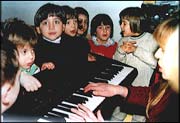
Info:
Via B. Cossa, 10
80070 Ischia (NA)
Tel./fax: 081 982848
Sito: www.procida.biz/musica/musicasenzafrontiere.asp
Email: This email address is being protected from spambots. You need JavaScript enabled to view it.
The association "Musica senza frontiere" born in 1996, with the aim of spreading musical culture through courses, seminars, concerts, essays and conferences.
The headquarters of the association are on Procida and Ischia.
Website:www.procida.biz/musica/musicasenzafrontiere.asp
Email: This email address is being protected from spambots. You need JavaScript enabled to view it.

Info:
Non-profit organization of social utility
Registered office: Via Seminario, 26 c/o Curia di Ischia – 80077 ISCHIA NA
Headquarters: Via delle Terme, 76/R – 80077 ISCHIA NA
Telephone e fax: 081981342 – 0813334228
Email: This email address is being protected from spambots. You need JavaScript enabled to view it.
The cooperative aims to pursue the general interest of the community to promote human and social integration of citizens through job placement in different activities (agricultural, industrial, commercial or service), to disadvantaged people in full compliance with the law 8/11/1991 No. 381 (article 1 paragraph 1 letter b) and any amendments thereto, which implements, in the mutualistic and non-profit form, self-management firm that is the goal, giving continuity jobs working with partners to better economic, social and professional. The cooperative works to build partnerships with public agencies. The cooperative not only provides services on behalf of the government but works closely in terms of social policies, at both the definition of strategies, both in bringing information, experiences, and administration to network with other organizations in the nonprofit sector. We have already sponsored several conferences on social issues, in cooperation with other cooperatives, enabling consortia and associations to which we belong, speaking in the debate.
IMPLEMENTATION OF EVENTS:
• Show event “Artischia” Lacco Ameno;
• “Forio portoni aperti”;
• Organization conference "Policoro Project" - Assisi in November 2003 - sponsored by CEI - Italian Episcopal Conference.
Info:
Via San G. Battista, 15
80070 - Barano
Tel.: 081 905164
Official folk dance group of ischia with 8 dancers ('ntrezzaturi), four players, two wind instruments (clarinets) and two tammorre.
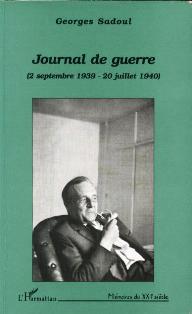
Info:
Via Osservatorio
Tel.: 081984332
The club was founded in 1977 as Georges Sadoul circle of film culture. However, the next year are already organized conferences, concerts and exhibitions.
Currently, the activities of the Club concerned the organization of film festivals, conferences and conventions, seminars for teachers and students of secondary schools of the island, exhibitions, a language school, a school of critics and film history. For its members, there are services that offer the chance to borrow books and magazines, as well as a video library with the greatest classics of the silent period and significant films of contemporary masters.
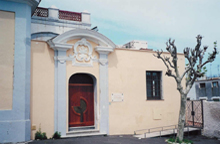
Info:
Base of the Biblioteca Comunale di Ischia
Rampe of Sant'Antonio, 5
80070 Ischia
Tel.: 0813333255
e-mail: This email address is being protected from spambots. You need JavaScript enabled to view it.
Summer time period starting from July 16 2019:
Mondays: closed
From Tuesday to Friday: 09: 00-12: 00/17: 00-20: 00
Saturdays: 10am to 12am - 5pm to 8pm
The Institution, promoted and strongly supported by Bishop Onofrio Buonocore, author also of numerous publications on the island of Ischia, in 1956, then formed in a charity, has today become "public library", as provided by the statute, and appropriate restoration works have recently launched the safe recovery of this important center of culture, the only of its kind existing in the island of Ischia.
It is located in "La Mandra" Ischia Ponte, near the Church of St. Antonio of Friars Minore, whence the name "Antoniana" has rightly been preserved in the new configuration.

Info:
Via Antonio Sogliuzzo, 15
Tel/fax: 081984943 - 081993108 (Pasquale )/ 081989784 (Rosario)
Site: www.aiapischia.it
The objective requires that the Association is to spread more art crib and create an artistic island approaching families, groups, communities in the great mystery of the Christian Nativity.
The competition this year is divided into two basic parts: Nativity Set, and Route Presepistico.
The Presepe Insieme was created to give everyone the opportunity to create a small crib (feet to eighty centimeters) then that will be shown in the final evening of Christmas, Epiphany. The most beautiful cribs will be awarded by a jury of experts (appointed by the head office in Rome). The crib must unite in the name of Jesus and for this reason must be done together with family, friends, parish, etc.. Hence the title given to the competition. The small size they’ll have the cribs give everyone the opportunity to join the contest. We strongly encourage those who have never made a crib to join the competition. The AIAP-Ischia offers the experience of all members of the crèche, which, in making their work open to the public, are willing to accept their premises those who want advice on implementation of the crib.
There are books, videos, articles, etc.., Representing a fundamental point of reference for those who are beginners and for those who want to deepen their crib technical.

Info:
Headquarters: Torre del Molino - Former Mandamentale Prison
Email: This email address is being protected from spambots. You need JavaScript enabled to view it.
The purpose of the association: to promote socio-cultural activities, protection, promotion and enhancement of the historic, artistic and natural heritage of the island of Ischia.
At first we were just a group of friends, who over the years has brought forward many initiatives, has lived with many positive and negative experiences, but we have realized, growing up, to have their own strengths, their own units.
Here was born the ‘Associazione Culturale Largo dei Naviganti’, non-profit organization that pursues only the aim of promoting socio-cultural activities, protection, promotion and enhancement of art-historical and natural island of Ischia.
The association, composed of a core of people fairly assorted, thus seeks to promote forms of association between citizens of different backgrounds and different ages, in their activities involving young people and older people, involving them in the realization of events typical of Ischian tradition.
And what better place, if not the Tower of ex-Prison Mandamentale Molino, that represents us historically, to accommodate the many events we have already achieved in the last year and that in the 2006 edition will be even more loads of artistic tradition and unique of its kind.
The most important event “Borgo in Festa, il Mare: voices and sounds of the people "with the amazing 2006 edition ‘Attack of the navy of the Saracens at Mandra’ which will be represented in the traditional event in honor of Our Lady ‘Bambinella’ on September 07 – 08 - 09.
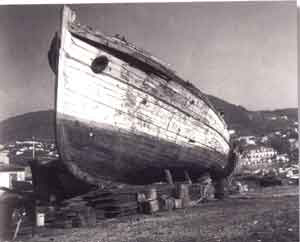
Info:
Via Giovanni da Procida, 3
Tel.: +39 081981124 - Fax +39 081993470
Site: web.tiscali.it/no-redirect-tiscali/museodelmare/
Email: This email address is being protected from spambots. You need JavaScript enabled to view it.
MUSEO DEL MARE Open every day following times:
July and August: morning 10,30-12,30 / afternoon 18,30-22,00
November, December, January, March: only in the morning 10,30 - 12,30
April, May, June, September, October: morning 10,30 - 12,30 / afternoon 17,00 - 20,0
February closed
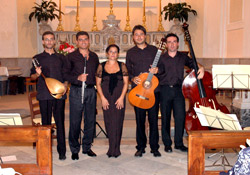
Info:
Associazione Accademia Armonie
Via N. Cartaromana, 111
80077 Ischia (Na)
Tel.: +39 081981655 - +39 3282854703
Fax +39 0815074522
Email: This email address is being protected from spambots. You need JavaScript enabled to view it.
Sito:www.accademiaarmonie.org
The Academy Harmony Association was formed in 1999 by three young musicians such as guitarist Antonio Pilato, the mandolinist Fabio Gallucci and flutist Angelo Ricci.
Founded with the intent to distribute and re-evaluate the indigenous musical culture and not only, still maintains the same goal, through the creation of a musical season "sui generis":
Musical events on the Green Island , takes place in one of the best places in the world as the island of Ischia, encouraging, especially but not only, the periods of highest tourist afflux. The lack of an auditorium, paradoxically, has helped, allowing a combination of unquestionable artistic value: the union between sacred and chamber music has allowed international artists to give their best in the picturesque scenery of the ancient cathedrals of Ischia, amplifying the central role for the community and the weight revaluating historical and artistic.

Info:
Via Pozzi, 13
80070 – Forio (Panza)
Tel.: +39 3474109844
Email: This email address is being protected from spambots. You need JavaScript enabled to view it.
Site: www.ipfeurope.com
The International Pen Friends was founded on April 7, 1967 and since then it has helped over a million and half people from all over the world and of all ages to find pen pals.
The club is still active and now boasts 300,000 members!
The objective of the International Pen Friends is to keep alive the correspondence by letter. It is not a marriage - only real pen pals.
Anyone who wants to have friends or friends of pen from anywhere in the world can subscribe to our organization by sending the registration form and fee.
You will receive a list of 15 correspondents which is roughly the same age, by selected countries and their interests. During the year of enrollment will also address data corresponding to another 15 ones.
For teachers, the IPF has also a special service for youth groups or students aged between 10 and 17 years.

Info:
Via Madonna delle Grazie, 46
80075 Forio (NA)
Tel.: +39 3665907697
Email: This email address is being protected from spambots. You need JavaScript enabled to view it.
Facebook: "Associazione culturale giovanile Moveo"
The association was born on July 7, 2010 by the will of 11 founding members .
The purpose of the Moveo association for the young is to encourage the spread of youth culture. In pursuing these purposes the Association will organize conferences, exhibitions, video projections and films, concerts, shows in general, theatrical and musical entertainment, publishing magazines for members, conference proceedings, audio and video materials, organizing meetings and any other activity community, cultural, recreational and publishing and adhering to the aims of the association, participate in clubs and other associations with similar aims as well as participate in organizations or associations with social and humanitarian purposes. (Excerpt from the statute).
Everyone, regardless of age, may become members of the association by paying an annual subscription fee.
The presentation of the association took place on July 22, 2010 in the courtyard of the Church of San Gennaro (Panza), in conjunction with the screening of the feature film "Demonatte" made by the association. About 600 spectators attended the event.

Info:
Via Francesco Calise, 29
80075 - Forio
Tel.: +39 0815071432
Email: This email address is being protected from spambots. You need JavaScript enabled to view it.
Bus lines: 1 - 14 - 2 - CD - CS
The cultural center "Galadriel" island of Ischia, has as its inspiration, the desire to learn, revive and spread the common civic, ethical and cultural sense inferred by the European, national, Mediterranean, southern and "island" identity. It has as its main objective the dissemination and promotion of the historical, economic, cultural and spiritual European roots, not only as a geographical expression, but also as a profound identity, which over the centuries has spread beyond its borders present.
The aims of the Center are:
a) The use and dissemination of Catholic culture, popular, community, traditional values of Mediterranean civilization, Ischian and European forms of expression of every kind of community identity;
b) The concretization of the values of solidarity and participation, through actions and initiatives aimed at solving social problems of all sections of the people, with particular reference to those most affected by the injustices and imbalances of today’s dominant model of development;
c) Addressing problems opened by the globalization of culture and market, and the emergence planetary consists of new forms of poverty, environmental degradation, exploitation and alienation.
d) Work for the defense of the right to life in all its aspects, of the family as the fundamental cell of society, of intermediate natural areas essential to the organic growth of man and society.
e) The defense and promotion of the island of Ischia in all its aspects - ecological, urban, artistic and social - and in all its potential - tourism, sports, production, management of free time - against all forms of exploitation and degradation.
Info:
Casella postale, 36
80074 Casamicciola Terme (Napoli)
Tel/fax.: 081 980310
Email: This email address is being protected from spambots. You need JavaScript enabled to view it.
Sito: www.procasamicciola.it
Authority of the Campania Region (art. 7 of Regional Law N ° 49/85) for the relevant activities carried out educational and cultural interest. Organizer of the International Poetry Prize "Ciro Coppola", established in 1978 - Prize of the President of the Republic.
Info:
Associazione scuola del Folklore
(affiliata all’A.R.C.I. P04/2721)
C. F. 91004420633
Via Ritola, 6
80070 Barano d’Ischia (NA)
Tel.: 081 990642
Email: This email address is being protected from spambots. You need JavaScript enabled to view it.
Sito: www.scuoladelfolklore.com
The members of our association are mainly young people well assisted by a group of adults (who are often trusted advisors to discover our earth).
ur social, cultural, artisticproject, ... began in 1983 when a group of people decided to socialize the elementary school children through folk dances, folk music courses, the newspaper Agora, the current camera, exhibitions the excursions to the houses Carusiello, the nativity, the courses of bagpipe and shawm, twinning, ...…
In 1997 we decided to form a new association named: Association School of Folklore.
Among our shows the well-knowna Ndrezzata and ‘A Vattute e ll’Astreche or Puntone.
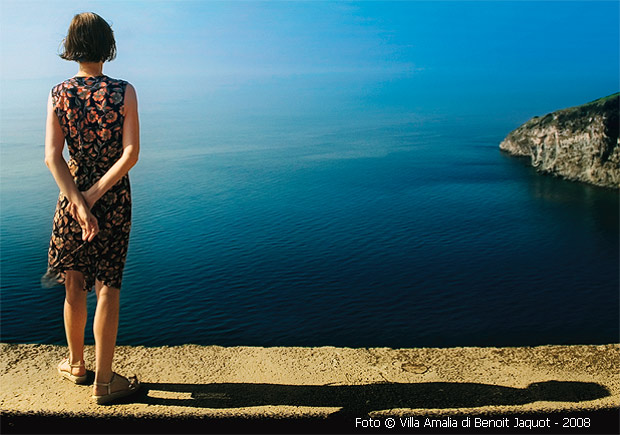
The French work, released in 2009, was shot on the island of Ischia in Campagnano and Mount Epomeo. The film used some of the many corners that characterize the green island on the one hand the atmosphere of the mountains that mark the peaks of Mount Epomeo, on the other the sea in the port of Ischia and flavors of its premises. A stand out, however, it is mainly the views of Campagnano, a hamlet in the Villa Amalia designed by Quingnard was recreated using an old house near the "Pignatiello", an area accessible only by foot and that has created many difficulties the crew in the wake of director Benoit Jacquot.
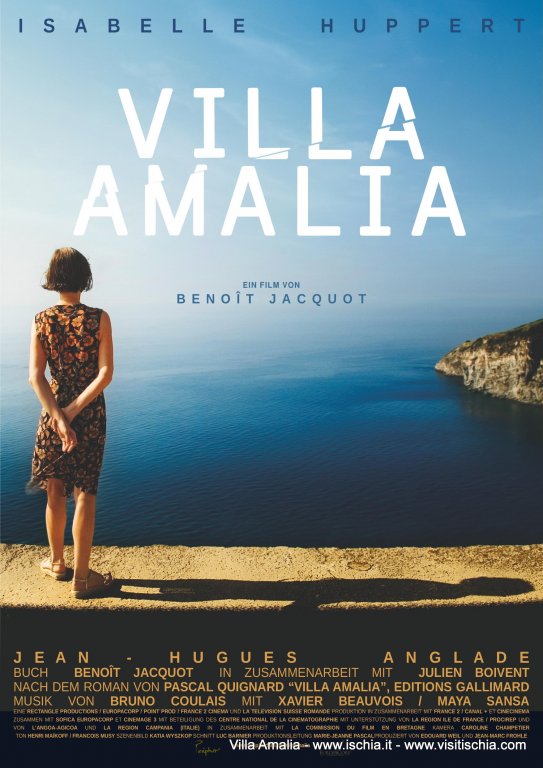
- Title VILLA AMALIA
- Release date(s) 2009, ITALO - FRANCESCE
- Genre FICTION
- Production EDOUARD WEIL
- Direction BENOÎT JACQUOT
- Starring: Isabelle Huppert, Jean-Hugues Anglade, Xavier Beauvois, Maya Sansa, Clara Bindi, Viviana Aliberti
- Music: Bruno Coulais
- Sound: Gabriel Hafner - François Musy
- Visual FX: Arnaud Damez
Plot
Ann (Isabelle Huppert) is a gifted and brilliant musician whose sense of security falls to pieces when she witnesses her husband kissing another woman. Without hesitation, she abandons him and takes a headlong rush into the arms of a new beginning, embarking on a transnational journey that ultimately takes her to an isolated villa on the secluded island of Ischia, Italy. Once settled, Ann insists on goading herself to fresh extremes, and takes it upon herself to swim out as far into the ocean as possible. Fainting under the scorching summer rays, her floating body is pulled out of the water by local woman Giulia (Maya Sansa), with whom Ann begins to explore a whole new facet of life.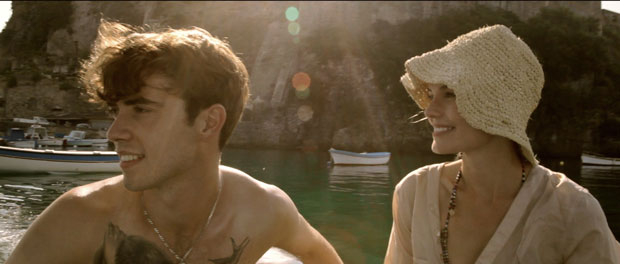
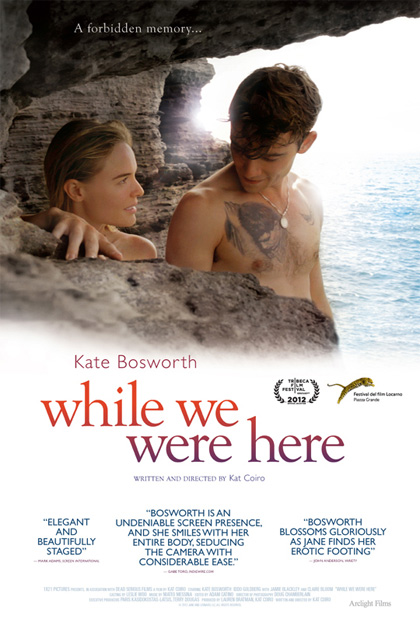
- Title AND WHILE WE WERE HERE
- Release date(s) 2012
- Genre DRAMMATICO
- Duration 83 min
- Production KAT COIRO
- Direction KAT COIRO
- Starring: Kate Bosworth, Claire Bloom, Iddo Goldberg, Jamie Blackley
- Photography: ---
- Visual FX: ---
- Music: ---
Plot
Jane, a young American writer Leonard accompanying her husband on a business trip to Ischia, is at a turning point and professional. On the run from the banality of its peaceful marriage, the woman is left to absorb more and more of his work, a literary adaptation of his grandmother's stories about the Second World War. Everything is complicated when they start an affair with a younger man. The idea of this film is based on the discovery of a series of audio tapes recorded by the grandmother of the writer-director Kat Coiro.
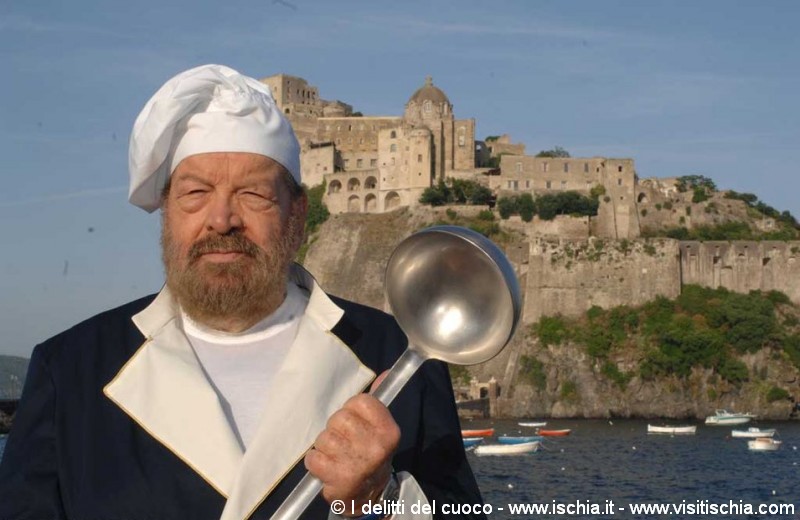
I delitti del cuoco is a TV series of the detective genre and starring by Bud Spencer, Henry Silvestrin, Sascha Zacharias, Giovanni Esposito, Monica Dugo, Monica Scattini, Eleonora Sergio, Lucia Ragni. Made in Italy. The series is broadcast from 09.05.2010 and for now consists of 1 season.
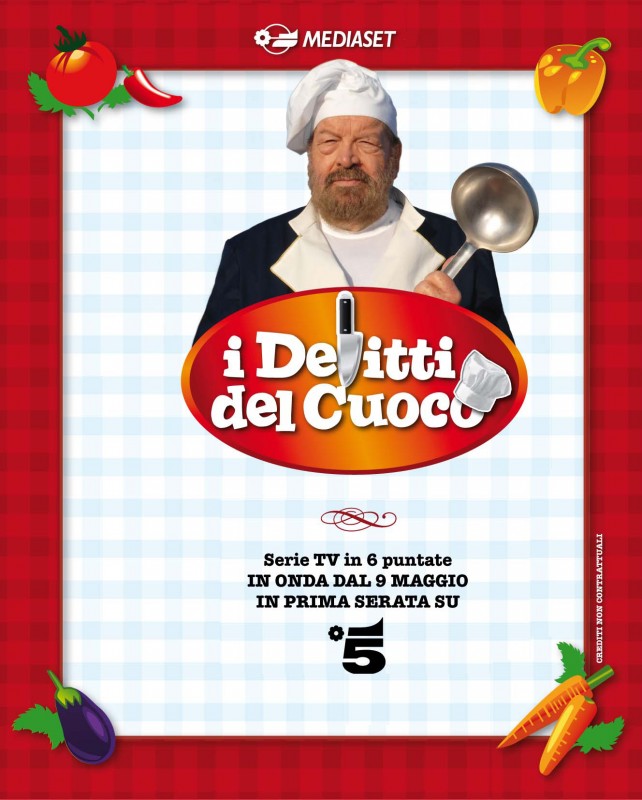
- Title I DELITTI DEL CUOCO
- Release date(s) 2009, ITALIA
- Genre DETECTIVE STORY
- Running time FICTION - TV SERIES
- Starring: Bud Spencer - Lucia Ragni - Monica Dugo - Giovanni Esposito - Enrico Silvestrin - Monica Scattini - Sascha Zacharias - Eleonora Sergio - Andrea Ferreol - Yari Gugliucci - Pietro Traldi
Plot
After a life dedicated to ferret out criminals and bring them to justice, Carlo Banci (Bud Spencer) has decided to retire on the tranquil and beautiful island of Ischia to devote himself to his true passion, cooking. He opened the famous restaurant Polipo Allegro and brought with him, recovering to civilian life, three old friends: Antonio (Giovanni Esposito), a former bank robber with a passion for weapons, Margherita (Monica Dugo), con artist and an expert counterfeiter, Castagna (Monica Scattini), who spent many years in prison accused of killing her husband, great chemistry and refined expert of poisons.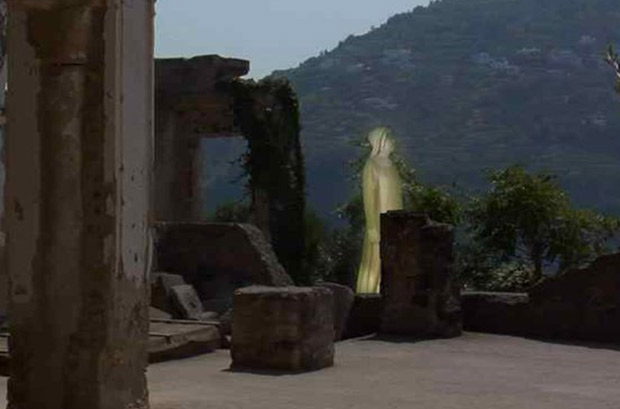
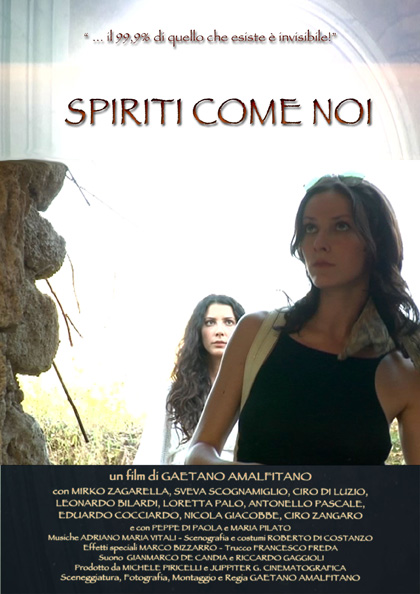
- Title SPIRITI COME NOI
- Release date(s) 2009
- Genre THRILLER
- Duration ---
- Production JUPPITER GENERALE CINEMATOGRAFICA
- Direction GAETANO AMALFITANO
- Starring: Mirko Zagarella, Sveva Scognamiglio, Leonardo Bilardi, Ciro Di Luzio, Loretta Palo, Antonello Pascale, Eduardo Cocciardo, Nicola Giacobbe, Ciro Zangaro
- Photography: Roberto Gerardi, Marco Scarpelli
- Visual FX: ---
- Music: ---
Plot
On the island of Ischia apparitions of ghosts and seances involving a group of young people on which hangs the presence of Munaciello typical goblin to Naples and surrounding areas but widespread throughout South Italy with different names. While Nando looking for a contact with the deceased father, Lisa explores the Munaciello to enrich his thesis on the spirits of the South Italy. A particular relationship between spiritualism and environmentalism connects people and events in the atmosphere but sunny mysterious island.
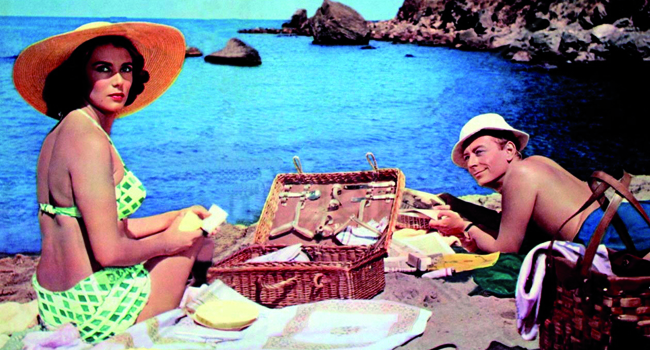
Ischia, you know, is one of the most sought destination for tourists and travelers, and is visited by more and different types of visitors whose interest certainly comes from the incomparable beauty of the island.
But, in addition to the natural setting, what has contributed to the charm of this island? Why over time, has Ischia become the territory of election for the cinema? Why have so many filmmakers chosen to set their shots?
Ischia, has always been a name that evokes myths, magic, memories and places whose the cinema has always interested. On the other hand, it offers filmmakers the opportunity to set almost any plot in a quiet island, scenery more disparate in the production of films: tales of adventure, love, mystery, comedy, drama, history.
In many of the films shot in Ischia, film producers, who have used more or less throughout the island for their shots, they spent more time in some places, which deserve special attention, because of their being "postcard places”. The cinema, in fact, has on a particular audience suggestion, the illusion of reality that characterizes it. In this sense, the location is of paramount importance for the shoot. In Ischia, for example, the massive Aragonese Cstle, an architectural complex of great value, harmoniously integrated into the landscape of which it forms part, becomes a symbol of battles, adventures, love, myths and legends, which took place in different eras.
Of no less importance is the“Soccorso Church” of sixteenth-century invoice, which together with the “Torrione” is the symbol of the town of Forio. It is one of the most unique architectural remains of the island favorite place for filmmakers to the phenomenon of "Green Flash", one of the more attractive that nature has to offer our eyes and is in particular weather conditions for one or two seconds, at the sunset.
Another isolate place, repeatedly used for filming, is the village of Sant’Angelo, a delightful site of Mediterranean colors, the houses huddled together, animated streets until late at night and sent a promontory that rises in the sea a few meters from the village. And then there is the legendary Fungo, symbol of Lacco Ameno.
An agency on the island that was involved in locations and casting film and TV, is "L’agenzia Ischia Film", whose creator was Michelangelo Messina. The idea was born to a passion for the cinema, in order to preserve historical memory, now dispersed in the minds of the elderly, and is also a support structure, which, in addition to helping the directors for their shots, showing images of the most interesting places, movies and stories, also supports the film and television productions.
The film production goes on, one of the last films shot in Ischia, directed and starring by Leonardo Pieraccioni, is entitled "Il paradiso all’improvviso”, and used as locations, the whole island, seeing places not yet explored by the islanders, such as, for example, an inlet located under the forest of Zaro. For the first time in his career as a director, Pieraccioni moves to the south, and the film is a great opportunity for advertising. Also in 2003, for fans of the soap opera "Un posto al sole", Ischia becomes the location for several episodes. Between one shot and another, actors obviously have not given up a little tan and bathing in the beautiful island.
The location has just a little changed, but the island of appeal has yet to express much. In short, the set is ready, and willing directors to set their stories on the green island there more than one!

What about these musical films with a melodic music? Typical film music of the 50s as a function of the repertoire of Neapolitan songs.
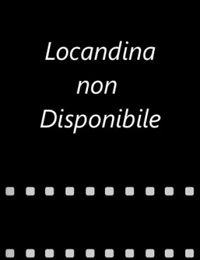
- Title LACRIME D'AMORE
- Release date(s) 1954, ITALIA
- Genre MUSICAL_COMEDY
- Running time 90 Min
- Production FORTUNATO MISIANO PER ROMANA FILM
- Direction PINO MERCANTI
- Starring: Nadia Bianchi, Mimmo Billi, Nada Costese, Dina De Santis, Bianca Fusari, Piero Giagnoni, Enrico Glori
- Photography: Augusto Tiezzi
- Music: Carlo Innocenzi
Plot
Grazia, wife of the rich owner Davide Montalto, from Genoa, knows in Naples Mario Benetti, employed in a factory with a beautiful voice. Between the two love flourishes, though Mario is engaged to Rosella. To avoid the dangerous allure of passion, Grazia returns to Genoa, where to distract takes the initiative to set up a magazine, which brings together young people and society ladies. If needed, is the participation of a Neapolitan singer, Davide Montalto, which ignores the previous romantic relationships between Grazia and Mario Benetti, may want to call in Genoa the latter. Mariocomes and singing alongside Grazia reap laurels, while the common activities and successes together feed their passion. An attempt to blackmail by the comm. Goebritz, a businessman opponent of Davide, that does not exacerbate, Grazia decides to leave her husband, after a frank explanation and left for Rome with Mario who, for his part, came off completely from Rosella. While in Rome Mario Radio follows the new successes, is unexpected a mournful news. The industrial Montalto and his two sons, parties on board an aircraft, have disappeared. The tragic announcement deeply affects Grazia, who became the seriousness of his offense, if they repent and ask God for the salvation of his fervent prayer. Having said goodbye to Mario forever, it sets out. The story ends in the best way: Davide is found, a little battered, but alive, the children were not on the plane. In Montalto’s house has returned the peace; Mario marries Rosella.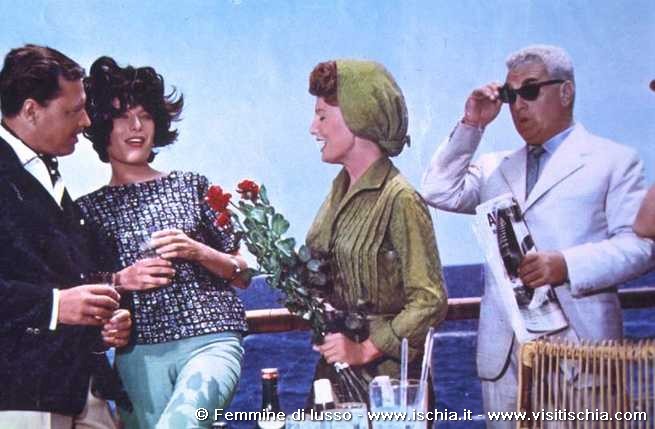
Femmine di Lusso is a 1960 film, directed by Giorgio Bianchi, also known under the title of Incontro aTaormina.
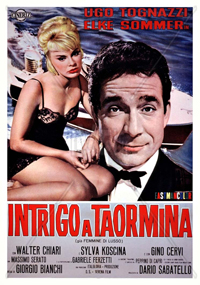
- Title FEMMINE DI LUSSO
- Other title INTRIGO A TAORMINA
- Release date(s) 1960
- Genre COMEDY
- Running time 109 Min
- Production DARIO SABATELLO PER ITALGLORIA
- Direction GIORGIO BIANCHI
- Starring: Gino Bartali, Marcello Bonini Olas, Ugo Tognazzi
- Photography: Tino Santoni
- Editing: Adriana Novelli
- Music: Carlo Rustichelli
Plot
The Commendatore Lemeni leaves by his yacht for a cruise, from the port of Lacco Ameno going to touch the coasts of Sicily. During the trip he was among the guests on board are intertwined relationships and misunderstandings arise. Alberto Bressan did woo his wife Adriana by Viscount Luca Sanvin, with unconfessed about getting a divorce and then marry his mistress Elena Legarde, he discovers that it is the former wife of Luca. Luciana was invited on board by the Commendatore with the pretext to pose for a series of publicity photos, but in reality to be shown as appetizing bait to the son, unswervingly misogynist, while failing in its persistent attempts, he meets the love in the person of a young man who was romantically linked some time ago. Finally, Walter, the photographer, who was followed by his girlfriend Greta secretly on the yacht, successful, much to the relief of the Commendatore, suffocating the girl to fall in love the apathetic Ugo. Elena will end then to reconcile with her ex-husband.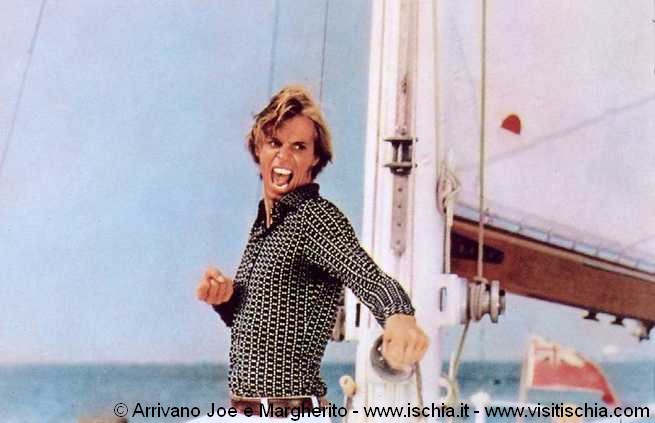
Funny without being exciting and eventful farcical comedy-adventure of Giuseppe Colizzi, inventor of the western spaghetti and sponsor of the tandem Bud Spencer-Terence Hill.
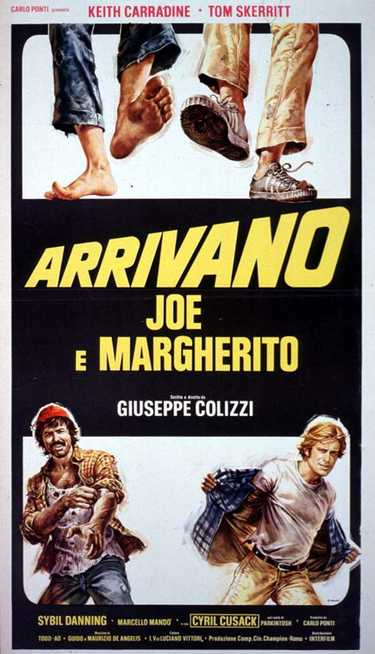
- Title ARRIVANO JOE E MARGHERITO
- Release date(s) 1974, FILM ITALO-FRANCESE
- Genre Commedia
- Running time 105 Min
- Production CARLO PONTI
- Direction GIUSEPPE COLIZZI, INVENTORE DEL DUO SPENCER-HILL
- Starring: Keith Carradine, Tom Skerritt, Sybil Danning
- Photography: Marcello Masciocchi
- Editing: Antonio Siciliano
- Music: Maurizio De Angelis, Guido De Angelis
Plot
A comedy by the fast pace and bright aspect. Adventures of an odd couple: Joe and Margherito, who must make a top-secret mission, take a Sicilian boss of the bad life and transfer him in the United States. To this end we require coldness, determination and discretion. But the one, Joe, an American man, is unable to weave plots mafia. And his companion, Margherito is a simple fisherman. The troubles and mishaps follow each other relentlessly. Another band tends to impede their mission. At one point in their path an extraordinary figure of British gentleman, an emblematic individual, who will win the two the right way.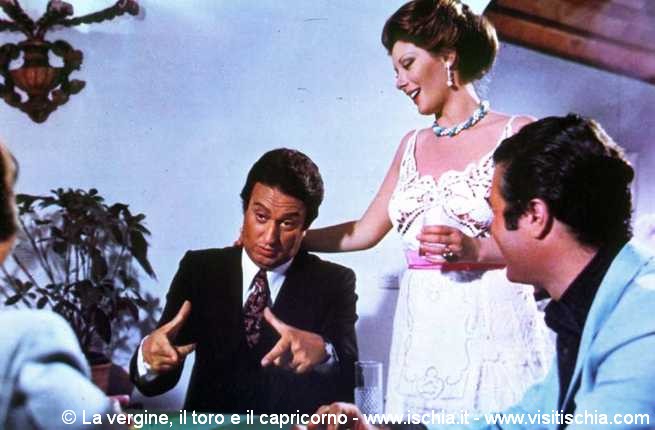
In the 70s the trend towards disengagement becomes standard, with the deterioration of the social situation and the spread of terrorism, the ongoing disputes, advancing the economic crisis and policy increasingly unable to govern the country. Even the comedy takes the direction of escape and production of series B, in which the current erotic is witness of the disconnect with the public and with the ability to read the real that had characterized. (Russo, 2002 p 154). Conforming to the production of the 70s in the rest of Italy, Ischia lends itself to become locations for the movie, "La Svergognata" film shot in '74, directed by Giuliano Biagetti. In '76 follows the film "La Profesoressa di scienze naturali" shot in Ischia in '76, directed by Michele Tarantini, who in recent years gives rise to a series of erotic- comic comedies interpreted by the sexy divas of the moment, in this case Lilli Carati. The next year there is the production of the film: "La vergine, il toro e il capricorno", directed by Luciano Martino, producer, director and Italian screenwriter.
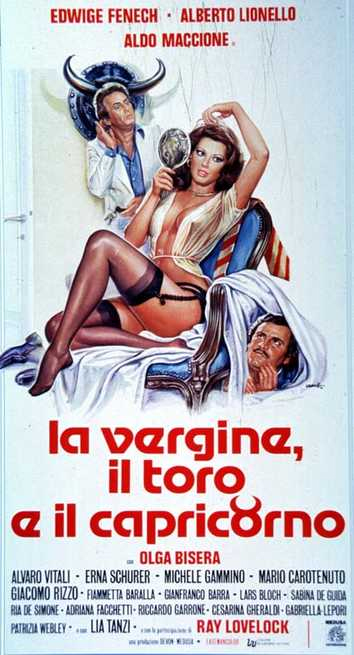
- Title LA VERGINE, IL TORO E IL CAPRICORNO
- Release date(s 1977, ITALIA
- Genre EROTIC
- Running time 95 Min
- Production DEVON MEDUSA
- Direction LUCIANO MARTINO
- Starring: Olga Bisera, Edwige Fenech, Alberto Lionello, Ray Lovelock, Aldo Maccione, Erna Schürer, Alvaro Vitali
- Photography: Giancarlo Ferrando
- Editing: Enzo Alabiso
- Music: Franco Pisano
Plot
The Milan Gianni Ferretti, building speculator in Rome, cheating on his wife Giulia with secretaries, typists and friends, but it is safe, with good reason, of his fidelity. After a fake adultery, however, staged to get him jealous, Julia decides to take revenge seriously. On Ischia, where she went secretly dropped two mature suitors, arrives as young lover Patrizio and she take him to Rome. Gianni realizes the truth, but he consoles himself immediately into the arms of yet another typist.
Shot in Ischia and Africa. The Last Mercenary is a former mercenary who, for love of the beautiful girlfriend Joanna decides to change his life, but some former comrades involved in drug trafficking. Rolf accepts only well meant. Traffickers make-up, in revenge, killing Joanna and Rolf takes revenge in turn.

- Title ROLF
- Release date(s) 1983, ITALIA
- Genre ADVENTURE FILM
- Running time 92 Min
- Other title THE LAST MERCENARY
- Production MARIO SICILIANO PER METHEUS FILM
- Direction MARIO SICILIANO
- Starring: Tony Marsina, Ketty Nicholas, Tony Raccosta
- Photography: Luigi Ciccarese
- Editing: Franco Malvestito
- Music: Fabio Frizzi
Plot
The protagonist, a former mercenary in war in Honduras, living in a small town in Tunis with the sole desire to forget the past of violence and marry his Joanna. The police does not lose sight of him, because "it is not possible" that Rolf is returned to normal after the experiences of death. Arrive five of his former comrades, led by John, who propose, since that is now the civilian pilot, to carry in a certain place a box behind drug lavish compensation. Our first refuses, but then agrees, but only to destroy the deadly load of stuff. The five then retaliate by raping and killing his beloved Joanna. Rolf in turn swears revenge invites five in a bush and, using the old trick of guerrilla warfare, implementing gimmicks brutal and violent, delete them all. Then, exhausted and almost devoid of life reasons, leave handcuffed by police officers who seek him.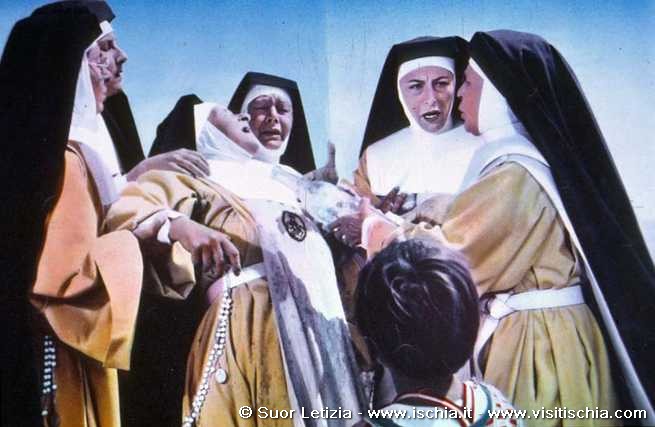
In the 70s the trend towards disengagement becomes standard, with the deterioration of the social situation and the spread of terrorism, the ongoing disputes, advancing the economic crisis and policy increasingly unable to govern the country. Even the comedy takes the direction of escape and production of series B, in which it is the erotic current witness of the disconnect with the public and with the ability to read the real that had characterized. The production slows down for a decade, and then continue with the film "A tenera follia", a film shot in '87 and directed by Nini Grassia, Italian director and promoter of a sentimental folk and exasperation cinema.

- Title UNA TENERA FOLLIA
- Release date(s) 1986
- Genre COMEDY
- Production ANTHONY FILM INTERNATIONAL
- Direction NINI GRASSIA
- Starring: Margit Evelyn Newton, Saverio Vallone, Sonia Viviani, Pippo Barone, Milvia Corona, Alex Damiani, Laura Papi, Yari Porzio, Mimmo Postiglione
Plot
A love story complicated by various events, which takes place between Ischia Porto and Ischia Ponte, S. Angelo, Lacco, Casamicciola.
In the genre of fiction, in '98 Ischia is chosen to "Commissario Raimondi" with the participation of Marco Columbro and Barbara de Rossi and directed by Paolo Costella.

- Title IL COMMISSARIO RAIMONDI
- Release date(s) 1998
- Genre DETECTIVE STORY - FICTION TV
- Running time 180 Min
- Direction PAOLO COSTELLA
- Starring: Marco Columbro, Barbara De Rossi, Antonio Campobasso, Lola Pagnani, Vincenzo Peluso, Mariano Rigillo
- Photography: Fabrizio Lucci
- Editing: Raimondo Crociani
- Music: Franz Di Cioccio, Patrick Djivas
Plot
Mr Raimondi left Milan and moved to Naples, where his family resides, which he had neglected for the job, but on his arrival he was involved in an intrigue: the kidnapping of his brother.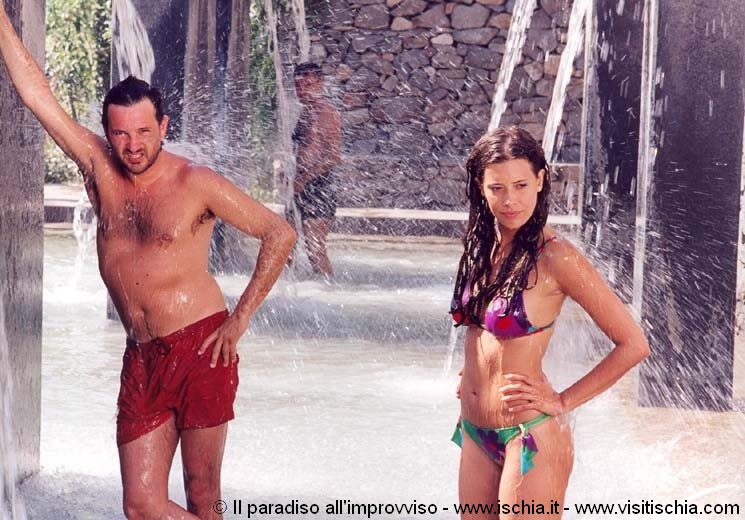
The film continues and in 2003, the last film shot in Ischia. The images were taken in June, the film is directed and starring Leonardo by Pieraccioni. It is entitled "Il Paradiso all’improvviso", and used as locations, a bit all over the island, seeing places not yet explored by islanders, such as, for example, an inlet located under the wood of Zaro. For the first time in his career as a director, Pieraccioni moves to the south, and the film is a great opportunity for advertising. Could be considered a result of the cine-tourism, "invented" by Rizzoli, a "mega card" of ten locations in six municipalities.
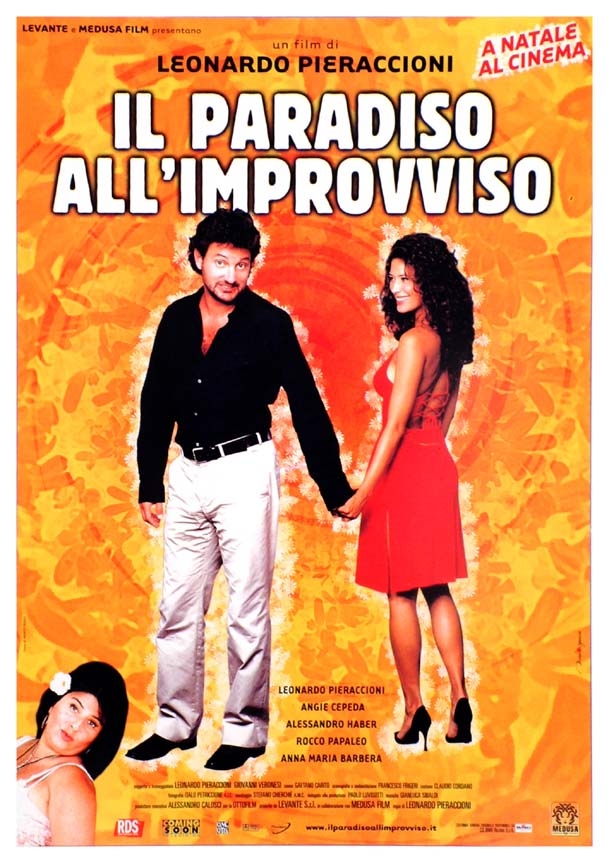
- Title IL PARADISO ALL'IMPROVVISO
- Release date(s) 2003
- Genre COMEDY
- Running time 93 Min
- Production LEVANTE FILM, MEDUSA FILM
- Direction LEONARDO PIERACCIONI
- Starring: Leonardo Pieraccioni, Angie Cepeda, Alessandro Haber, Rocco Papaleo, Anna Maria Barbera
- Photography: Italo Petriccione
- Editing: Stefano Chierchiè
- Music: Gianluca Sibaldi
Plot
Lorenzo is a very single man. Every morning when he wakes up he is happy to go to the bathroom and find only a bathrobe and a toothbrush. It has a firm "Pioggia, Neve e Grandine": makes for theater, film and television special effects. His collaborator for many years is Nina, the daughter of a great tenor work with the special effects when he was thirteen. Lorenzo and Nina are called to work in Ischia, in a beautiful villa overlooking the sea. There he knows Amaranta, a beautiful Colombian girl and inside that wonderful villa he is waiting for her boyfriend and wants to recreate the atmosphere of when she met him in the mountains and it was snowing. Lorenzo and Nina prepare the snow machine. Amaranta, dressed in an elegant white dress, waits to board a boyfriend for that special dinner. But the wait goes on..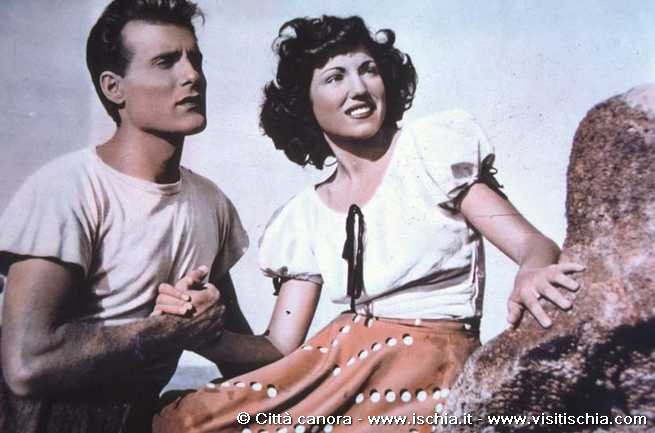
"The film shows a remarkable improvement of cleanliness and decorum in the Amoroso production, no doubt about the director Costa who, while not pursuing artistic purposes, however unnecessary in this kind of films, played with skill and sincerity a story well known , frequently, interrupted by the execution of famous Neapolitan songs”.
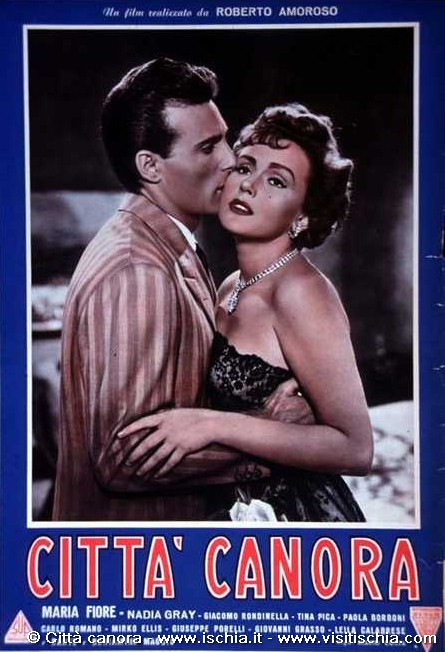
- Title: CITTA' CANORA
- Release date(s): 1952
- Genre: MUSICAL
- Running time: 80 Min
- Production: ROBERTO AMOROSO PER SUD FILM
- Direction: MARIO COSTA
- Starring: Paola Borboni, Leila Calabrese, Luigi De Simone, Mirko Ellis, Maria Fiore, Giovanni Grasso, Nadia Gray, Beniamino Maggio, Dante Maggio, Tina Pica, Giuseppe Porelli, Carlo Romano, Giacomo Rondinella
- Photography: Francesco Izzarelli
- Music: Gino Filippini
Plot
A beautiful Neapolitan girl, Maria, daughter of Don Salvatore, owner of a fishing fleet, flirting with Giacomo, a young sailor in the fleet, but Don Salvatore decided to marry Maria Renato, son of his dear friend, long dead, and meanwhile makes Renato his partner. When he discovers that between Maria and Giacomo has formed a bond of mutual affection, Don Salvatore does not hesitate to lay the sailor, and he walks away, at the same time, Mary, preparing to flee with Giacomo. Following a misunderstanding, Giacomo believes that Mary does not love her anymore, and the young man, who has a beautiful voice and use it, then decides to accept an offered to write and went to Milan, where he debuted successfully in a magazine. Maria, who, in turn, believed to be abandoned, is willing to marry Renato. Meanwhile, abusing the confidence of Don Salvatore, he presents one of the fishing boats of the future father in law to pursue drug trafficking, but the suspicious traffic is discovered and while Renato escapes and is suppressed by accomplices, Don Salvatore is stopped. Giacomo, who is doing a brilliant career, discovers that Maria loves her still: he quickly returns to Naples and all ends happily. Recognized the innocence of Don Salvatore: Giacomo married Maria.
Many of these films use the island as only locations. It appears, in fact, difficult to believe that an island, so evocative and fascinating, can be used as a place of horror and fear. However, its nature is transformed, showing also available as a place of horror. During the period of the film in '45, Boris Karloff watched many Ischians and told the press. "I am in Ischia to make a good movie and are oxygenated by this island so full of sun warmth. It 's really hard-working the population of Ischia. It has been a great experience to come to this island. In a break from work, I took the opportunity to met Boris Karloff, a friendly and very human man, very different from those terrifying roles had in the movies. Karloff loved the sea, seeing the crafts isle and watching the fishermen at work. He was really a gentleman".
MMany scenes in this movie were filmed along the homes of Corso Vittoria Colonna and in the pine forest of Ischia Ponte.
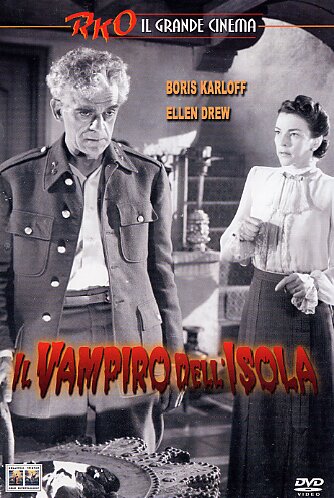
- Title ISLE OF THE DEAD
- Release date(s) 1945, USA
- Running time 72 Min
- Genre HORROR
- Direction MARK ROBSON
- Photography: Jack MacKenzie
- Editing: Lyle Boyer
- Music: Leigh Harline
Plot
Greece 1912. General Nikolas Pherides went with some friends on a small island of the Aegean Sea, where is the tomb of his wife, but when he discovers that the place has been tampered with. To make matters worse, an old fanatic believes that Thea, a young Greek woman, is possessed by an evil spirit. The plague broke out in the island, the inhabitants are quarantined and Thea is blamed for the disaster. The general, affected by the disease, in a moment of madness, attempts to kill the girl. Thea has to accept the help of a young journalist and escape to leave the contaminated island.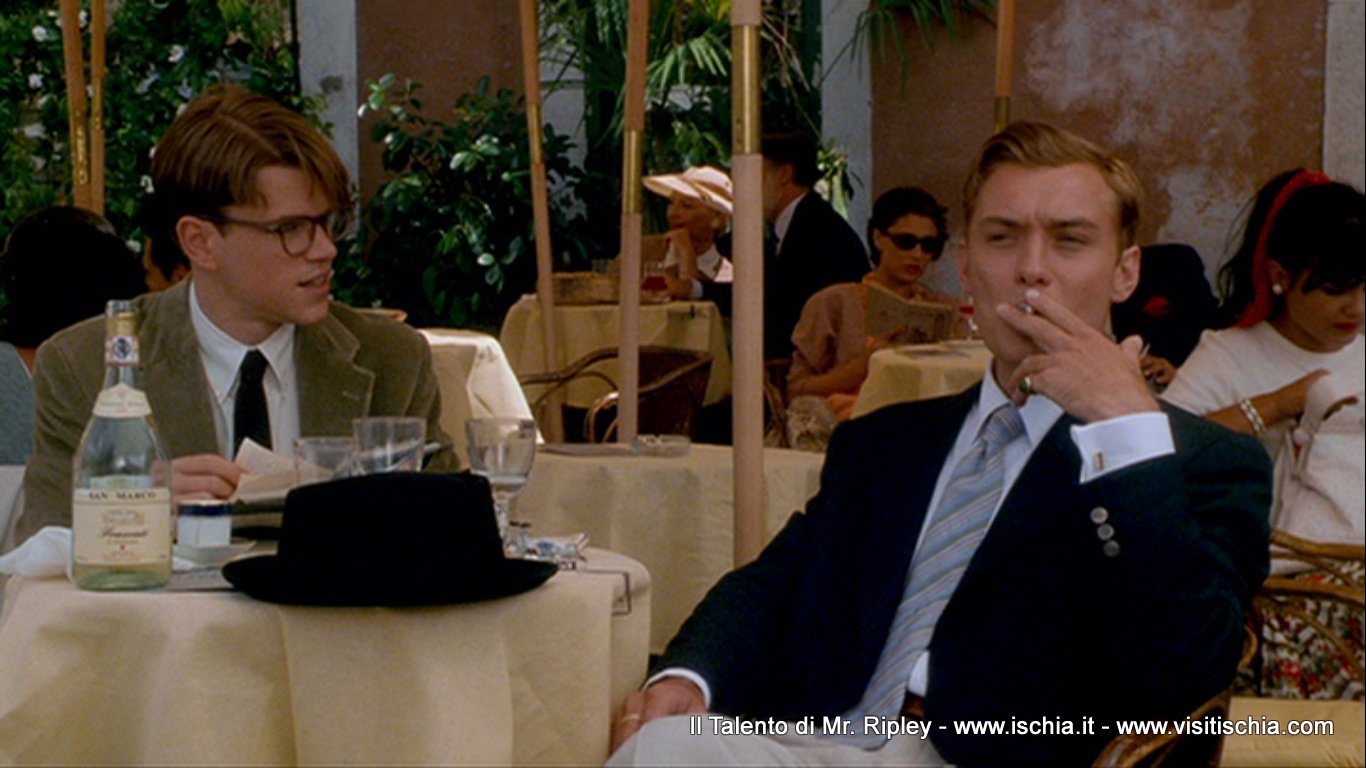
LThe first fiction set in Ischia is “Il Commissario Raimondi“ made in '98, and almost as if by a call in Ischia turned the film "The Talented Mr. Ripley", directed by Anthony Mingella. “The Talented Mr. Ripley” has intrigued and fascinated the audience to such an extent as to affect the choice of holiday in our country.
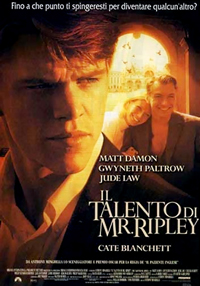
- Title THE TALENTED MR. RIPLEY
- Release date(s) 1999, USA
- Genre DRAMATIC - THRILLER
- Running time 150 Min
- Based on THE NOVEL BY Patricia Highsmith
- Production WILLIAM HOLBERG
- Diredction ANTHONY MINGHELLA
- Starring: Matt Damon, Jude Law, Gwyneth Paltrow, Cate Blanchett, Philip Seymour Hoffman, Fiorello
- Photography: John Seale
- Editing: Walter Murch
- Music: Gabriel Yared
Plot
In the 50s. In the United States, at a reception, the young Tom Ripley knows the Dicke’s father, a contemporary rich and spoiled man left for Italy without giving any news of him. The father instructs Tom to travel there and do everything to bring back his son. In Italy Tom knows Dickie, his girlfriend Marge and their carefree way of living between Ischia, Capri, the sea, excursions. Soon Tom forgets the purpose of his trip, enters little by little in the life of Dickie, he became the inseparable companion, following him in nightclubs in trips to Naples and Rome. But one day, in Sanremo, Dickie fed up with Tom, doesn’t want to see and tells him to go away. Then, on the boat, Tom strikes, kills him, takes the money and his identity. In this new role, Tom / Dickie returns to the country, then decided to move to Rome, where he rented a large apartment. Here comes Freddie, old friend of Dickie, who immediately realizes that Tom is hiding something that Tom nothing else to do than delete it. Pressed from the surveys conducted by the inspector Roverini, Tom leaves for Venice. Here there’s also the father of Dickie and Marge. The parent reads a letter in which Dickie said of wanting to commit suicide and tells Tom that he has no blame for what has happened. It is equally convinced Marge, but is not heard. Tom embarks on a ship to Greece.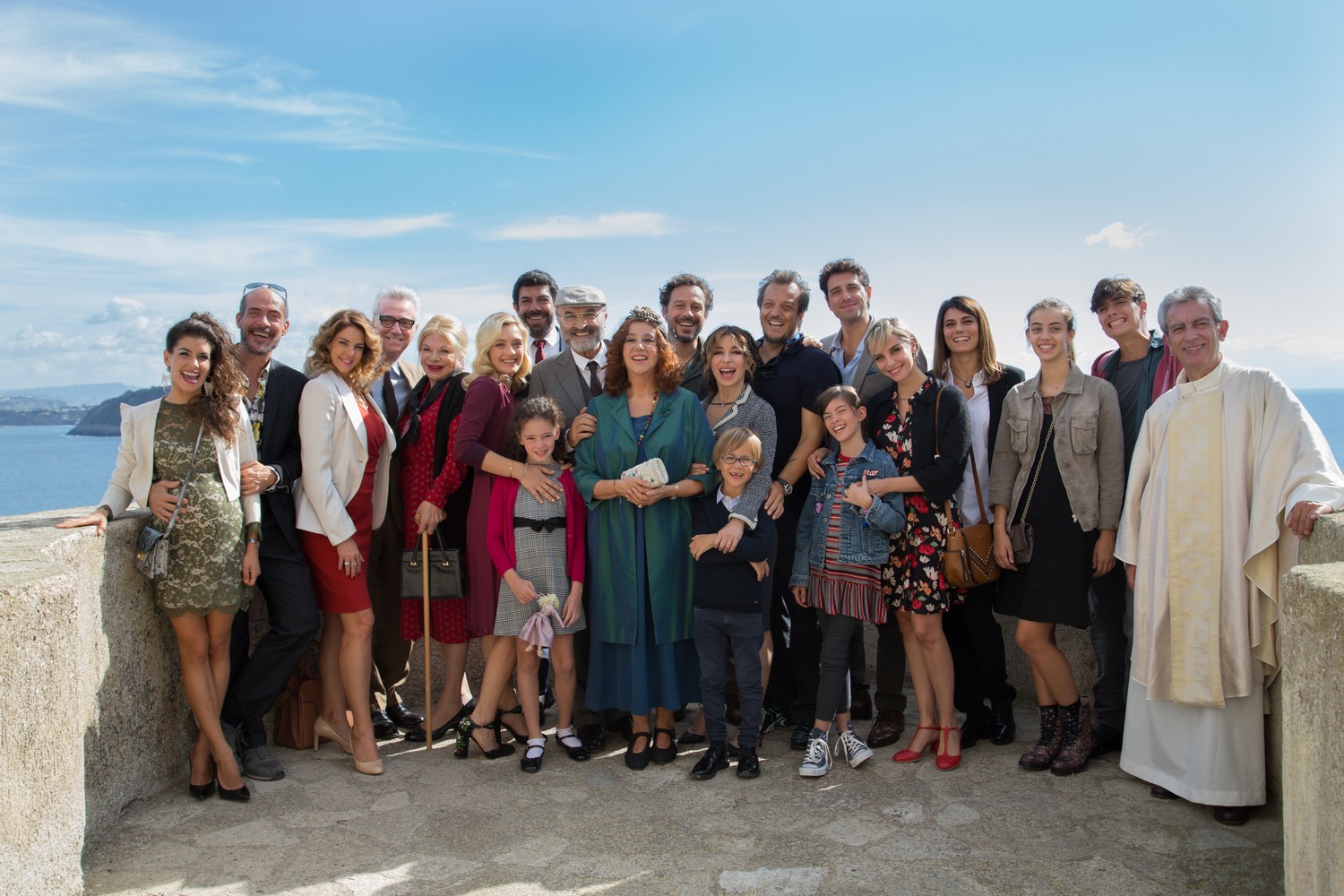
A Casa Tutti Bene is the story of a large family to celebrate the Grandparents' Golden Wedding on the island where they have moved to live. A sudden sea storm stops the arrival of the ferries and skips the return expected in the evening forcing everyone to get stuck on the island and to deal with themselves, with their past, with never jealousy covered, restlessness, betrayals, fears and even sudden and unexpected lightning strikes.
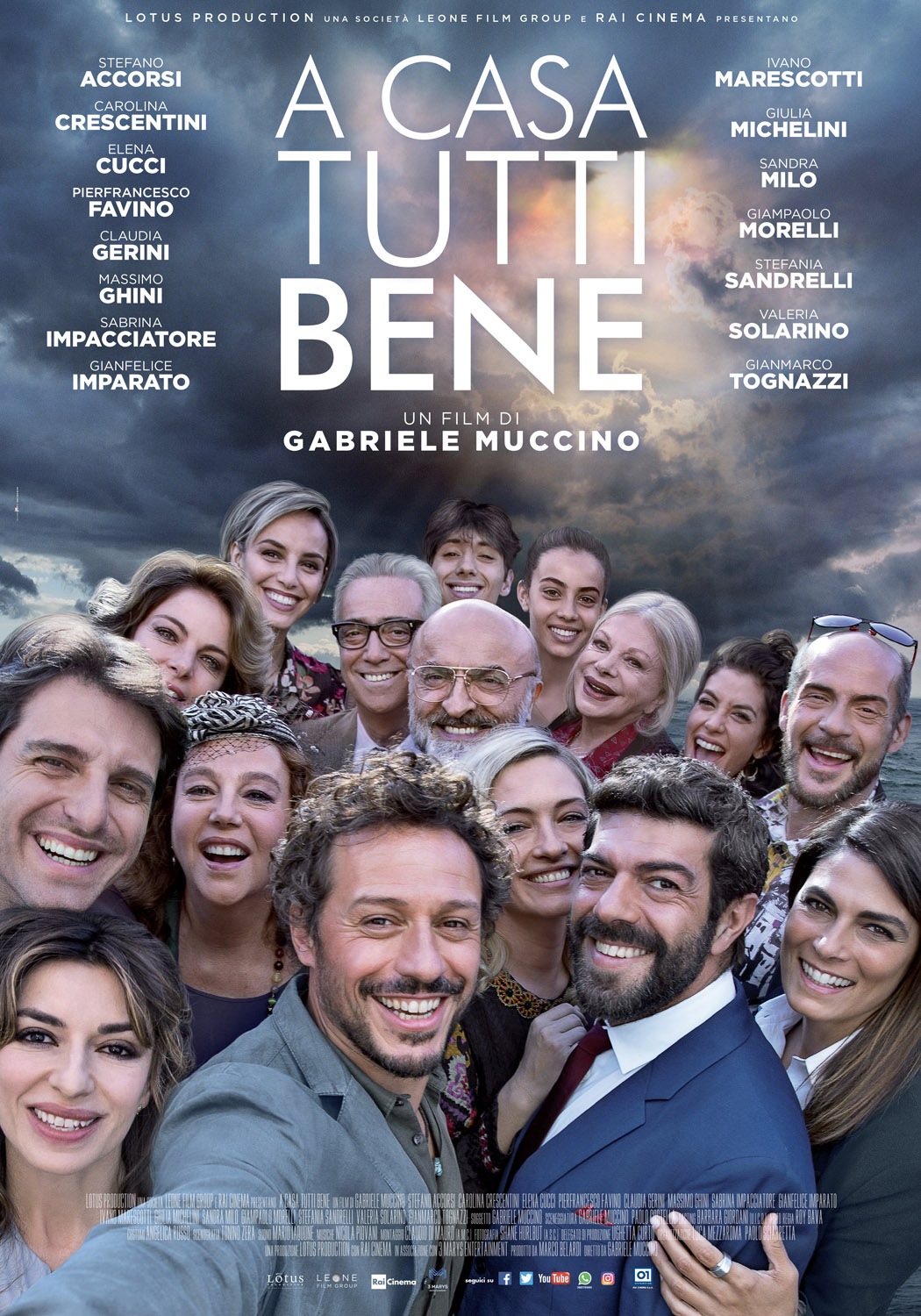
- Title A CASA TUTTI BENE
- Release date 2018
- Genre DRAMATIC
- Running time 105 Min
- Production 01 DISTRIBUTION, RAI CINEMA
- Direction GABRIELE MUCCINO
- Starring: Stefano Accorsi, Carolina Crescentini, Elena Cucci, Tea Falco, Pierfrancesco Favino, Claudia Gerini, Massimo Ghini, Sabrina Impacciatore, Gianfelice Imparato, Ivano Marescotti, Giulia Michelini, Sandra Milo, Giampaolo Morelli, Stefania Sandrelli, Valeria Solarino, Gianmarco Tognazzi
- Photography: Shane Hurlbut
- Editing: Claudio Di Mauro
- Music: Nicola Piovani
Plot
Pietro and Alba celebrate fifty years of love. From their marriage were born Carlo, Sara and Paolo, boarded with spouse, offspring, aunts and cousins to an island of the South. In that pleasant place, where Pietro and Alba have spent their most beautiful time, a family meets to the brink of a dramatic crisis. Ginevra, the new and unbearable wife, oppresses Carlo, separated from Elettra, , Sara, married to Diego, tries to recover a marriage adrift, Paolo, driven out of the wife and scorned by his son because of a betrayal, runs empty and ends up in bed with his cousin. And then there is Riccardo waiting for a son from Luana and begging for a (second) chance to uncle Pietro, Elettra who tries to cope with the jealousy of Geneva and Isabella, a bored wife of a husband too far away who betrays with Paolo. The heavy sea and a sudden storm prevent the departures of the ferries and force the guests to prolong their stay, cohabitation and agony. Neurotic satellites around the 'spouses' try to spend a night that does not pass and will not pass.
In the late '90s, the film takes on Ischia, taking a quantum leap with the film "The Talented Mr. Riplay" directed by Anthony Minghella, to keep up with proper commercial genres like the movie "Cient'anne “directed by Nini Grassia, which works so that it looks like a television soap opera pace, up to a melodramatic final. The critics could not help but highlight only positive note, or the beautiful scenery and the fun shape of the hawker”.
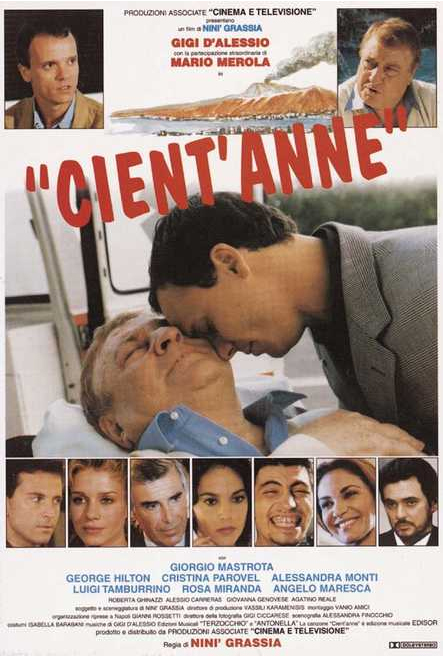
- Title CIENT'ANNE
- Release date(s) 1999
- Genre COMMEDIA
- Running time 105 Min
- Production PRODUZIONI ASSOCIATE CINEMA E TELEVISIONE S.R.L.
- Direction NINI GRASSIA
- Starring: Gigi D'Alessio, Mario Merola, Giorgio Mastrota
- Photography: Luigi Ciccarese
- Editing: Vanio Amici
- Music: Gigi D'Alessio
Plotm
Adopted son of Merola, Gigi (G. D'Alessio), singer of piano-bar in a hotel on the Amalfi coast, dreams of recording his first CD, suffers in the memory of an incident in which his girlfriend died and discovers that he has to father his employer (G. Hilton), parent also of his rival in love (G. Mastrota). Grand finale with Merola, dying on a stretcher, who sings the title song along with her godson, his true heir hold high the banner of Neapolitan songs in the world. Labored attempt to revive the scripted television in loose rhythms with daring and clumsy self-citations (from Dictionary of the movie "il Morandini 2004" ). Scenes in Ischia Ponte, in the Mandra, Lacco Ameno, Forio, Sant'Angelo.
In the 70s the trend towards disengagement becomes standard, with the deterioration of the social situation and the spread of terrorism, the ongoing disputes, advancing the economic crisis and policy increasingly unable to govern the country. Even the comedy takes the direction of escape and production of series B, in which it is the erotic current to witness the disconnect with the public and with the ability to read the real that had characterized. (Russo, 2002 p 154). Conforming to the production of the 70 in the rest of Italy, Ischia lends itself to become locations for the movie, "La Svergognata" film shot in '74, directed by Giuliano Biagetti. In '76 follows the film "La professoressa di scienze naturali " shot in Ischia in '76, directed by Michele Tarantini, who in recent years gives rise to a series of erotic-comic comedies interpreted by the sexy divas of the moment, in this case Lilli Carati.
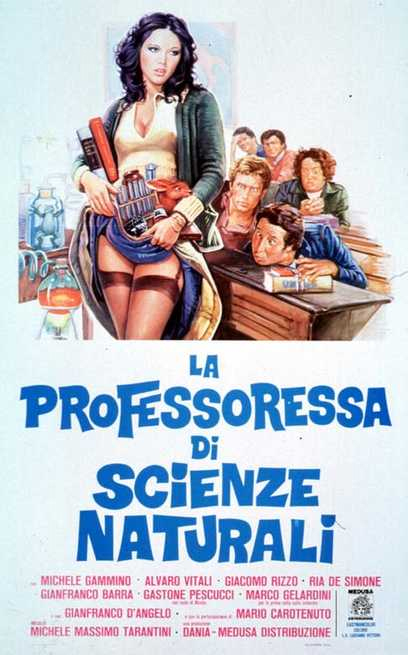
- Title LA PROFESSORESSA DI SCIENZE NATURALI
- Release date(s) 1976
- Genre EROTIC
- Running time 90 Min
- Production DANIA FILM MEDUSA DISTRIBUZIONE
- Direction MICHELE MASSIMO TARANTINI
- Starring: Gianfranco Barra, Lilli Carati, Mario Carotenuto, Rita De Simone, Adriana Facchetti, Michele Gammino, Gastone Pescucci, Giacomo Rizzo, Alvaro Vitali
- Photography: Angelo Filippini
- Editing: Daniele Alabiso
- Music: Alessandro Alessandroni
Plot
The high school of a Sicilian town has not a science teacher, when the mature prof. Mastrilli, putting together carelessly nitric acid and distilled water in the course of an experiment, outing of action. On the advice of the pharmacist Nicola Balsamo, is requested and obtained a graduate student Stefania Marini, whose loveliness makes fresh agitation in loving both the students as their parents. But it is the chemist's son, Andrea, first to hit the defenseless heart of the teacher, however, the court accepts the rich dr. Peppino. One day, taking advantage of a boating accident, Andrea and Stefania love among the waves. Nevertheless, the teacher marries the doctor without having to give up the relationship with her student.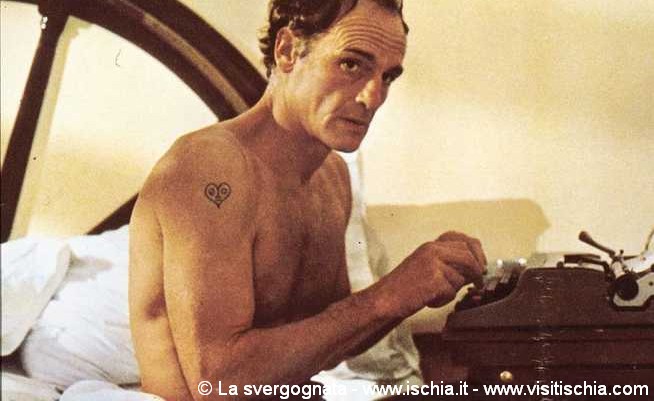
In the 70s the trend towards disengagement becomes standard, with the deterioration of the social situation and the spread of terrorism, the ongoing disputes, advancing the economic crisis and policy increasingly unable to govern the country. Even the comedy takes the direction of escape and production of series B, in which it is the current erotic to witness the disconnect with the public and with the ability to read the real that had characterized. Conforming to the production of the 70 in the rest of Italy, Ischia lends itself to become locations for the movie, "La Svergognata" film shot in '74, directed by Giuliano Biagetti. In '76 follows the film "La professoressa di scienze naturali" shot in Ischia in '76, directed by Michele Tarantini, who in recent years gives rise to a series of erotic comedies comic interpreted by the sexy divas of the moment, in this case Lilli Carati.
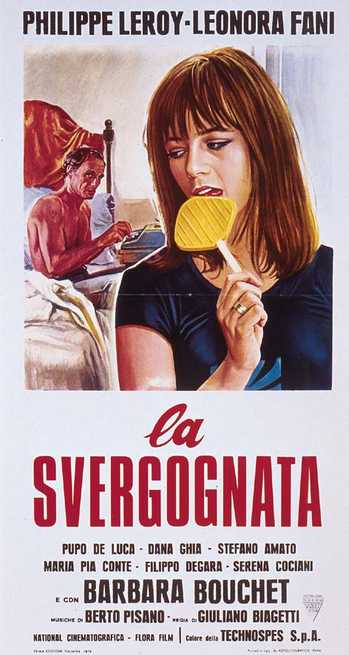
- Title LA SVERGOGNATA
- Release date(s) 1974
- Genre COMMEDIA
- Running time 90 Min
- Screenplay Giuliano Biagetti, Giorgio Mariuzzo
- Direction GIULIANO BIAGETTI
- Starring: Barbara Bouchet, Maria Pia Conte, Dante Cleri, Serena Cociani, Filippo De Gara
- Photography: Anton Giulio Borghesi
- Editing: Alberto Moriani
- Music: Berto Pisano
Plot
IMr. Nino Bernardi, industrial Milan man, reached Ischia for a holiday with his wife Clara and his teenage daughter Ornella. In the same hotel down several people, among which is Fabio Lorenzi, depressive writer in crisis already loving lady Bernardi five years before and now faithful companion of the actress Silvia. Ornella, stimulated by her friend Giusi, soon tires of the fleeting and superficial encounters with various Andrea, Adriano etc.. boys on holiday or service, and aims to Fabio that is attracted by the fresh little girl but comes from the same office with volatility in white. Only when in the resort, called by the writer, also comes Silvia, Ornella became jealous and eventually perhaps the writer who has since found a vein and confidence in their own creativity.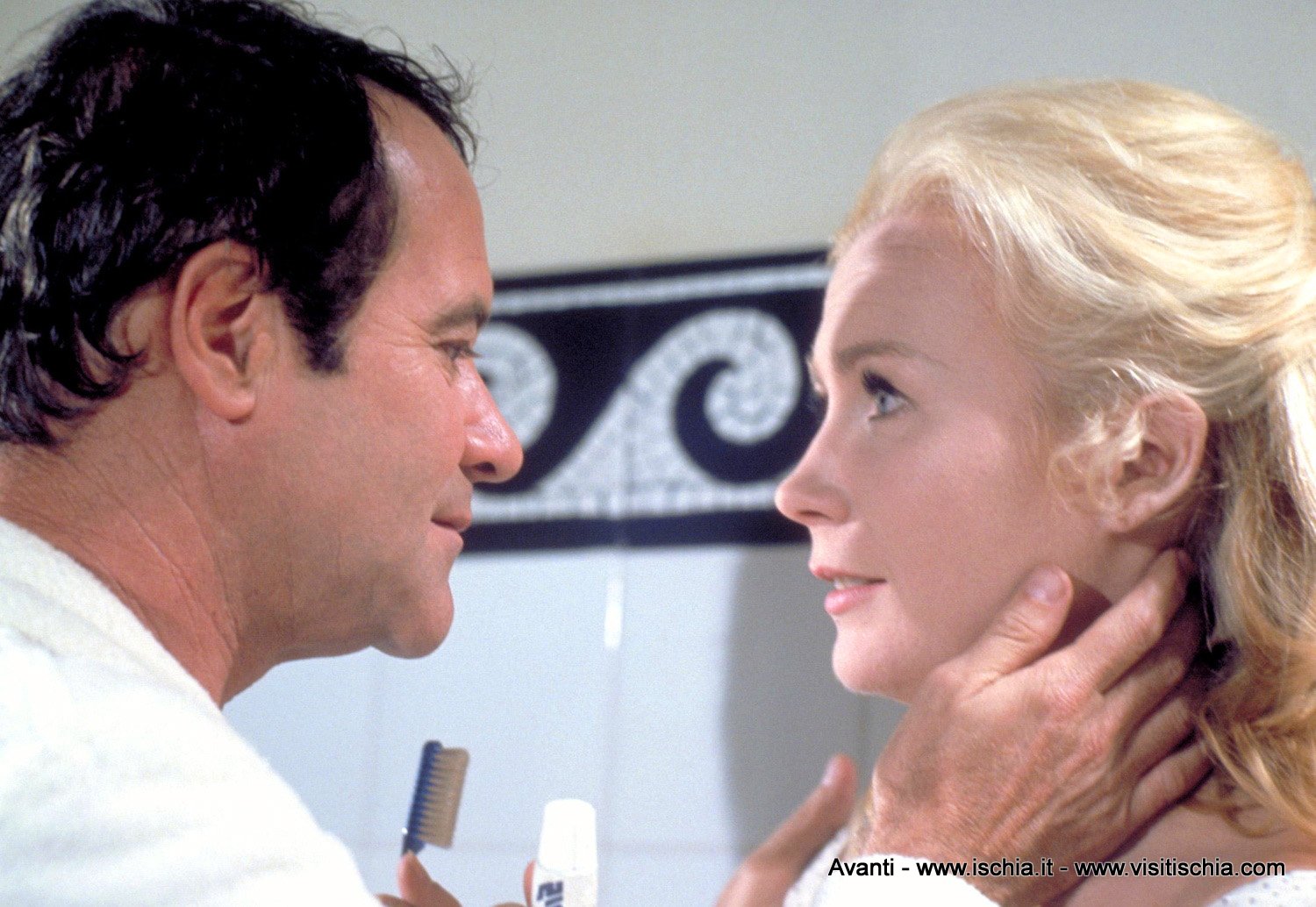
Also within the knowledge and sponsorship of the island through the location is also important to mention the movie "Avanti" or " Che cosa è successo tra mio padre e tua madre" made in '72 and directed by Billy Wilder, who chose Ischia for his film, tells the story of a wealthy businessman in Baltimore go to Ischia to recover the body of his father and discovers, with great surprise, that he died in the arms of his mistress, whom he met regularly for ten years during his holidays. On site there is also the daughter of the woman who has a less moralistic attitude towards the two lovers than man's. But the warmth and Mediterranean Eden appear in a disarming clarity, which turns slowly in a liberating sense, adventurous and pay existence, the only solution to defeat the holes blacks of human destiny. The film is presented as a self-mocking portrait of what Americans see the soul Mediterranean, and especially in Europe. Ischia became the location for the description of adultery "therapeutic", a place where you can relax and enjoy life. The church of Soccorso turns to the morgue where the employee is Pippo Franco, dealing with forms and stamps. It was also used the port of Ischia for the landing of a helicopter. Other sequences were shot in Sant'Angelo, Monte Vico where was taken up the entire landscape of Lacco Ameno, Ischia Ponte, the port and along the main road that leads to Forio.
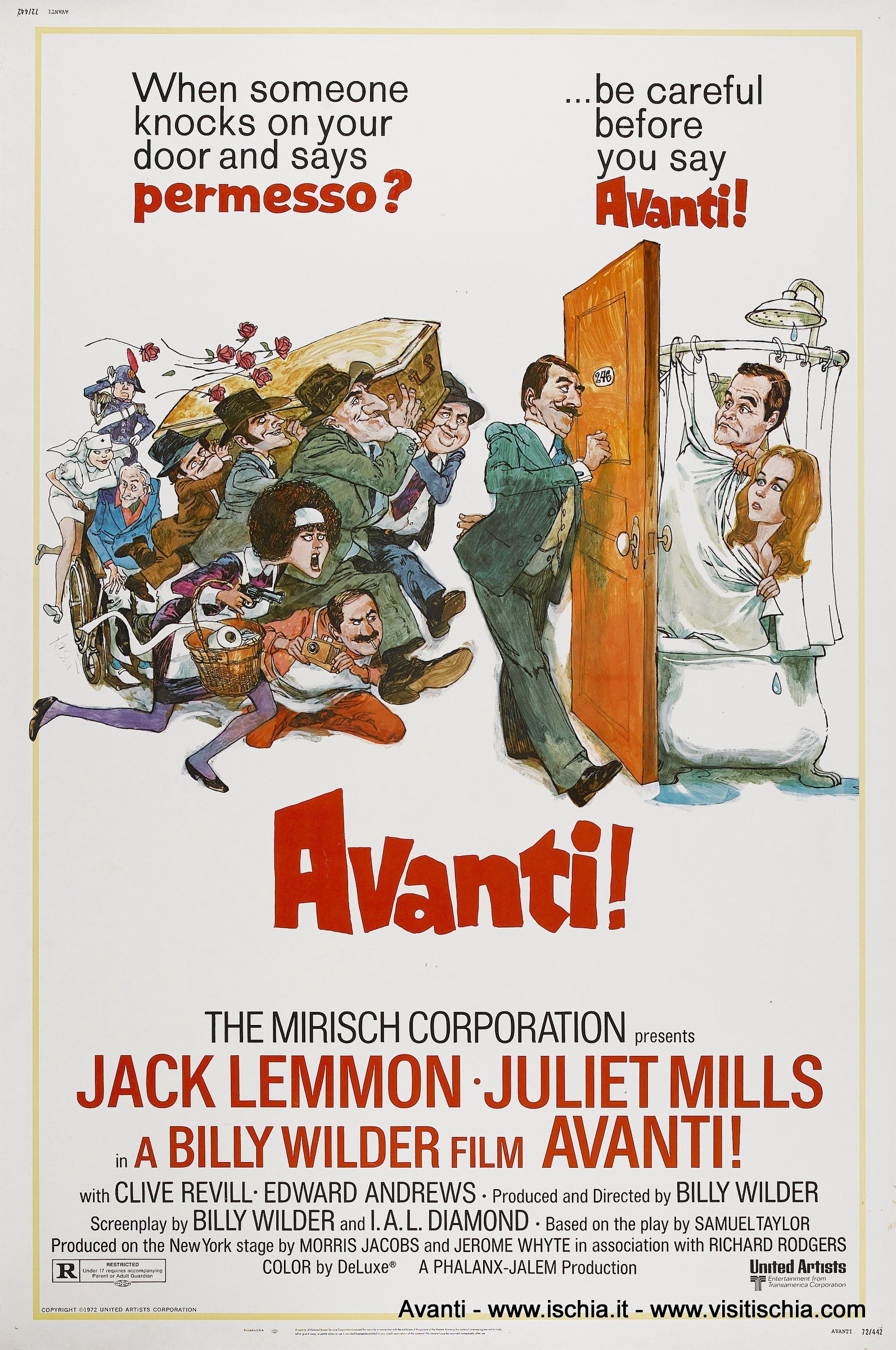
- Title AVANTI
- Release date(s) 1972, USA
- Genre ROMANCE FILM
- Running time 146 Min
- Based on THE COMEDY "AVANTI" BY SAMUEL A. TAYLOR
- Production MIRISCH CORPORATION - PEA (ROMA)
- Direction BILLY WILDER
- Starring: Jack Lemmon, Juliette Mills, Pippo Franco
- Photography: Luigi Kuveiller
- Musci: Carlo Rustichelli
Plot
Wendell Ambruster junior, an industrialist of 42 years, is the island of Ischia to pick up the body of his father, Wendell Ambruster senior expert in an accident, and bring it to America where he prepares a grand funeral. During the trip to Ischia and then met Pamela Piggott, a plump London woman, came to pick up the corpse of her mother, Catherine, who was for years (without even she knows) lover of Wendell senior and perished with him. The exasperating bureaucratic delays are further complicated by the disappearance of the bodies by the family as ransom Trotta claiming compensation for accident damaged the vineyard. Solves all the hotel manager, Carlo Carlucci, man sailed and of inexhaustible resources. More blackmail weaves Bruno, the waiter who wants a visa to the U.S. in exchange for compromising photographs of the dead lovers, and then on other identical situations junior Wendell and Pamela, the two, in fact, after quarrels and fights, they repeat the same as the each of the parents. Bruno is killed by the Sicilian maid Anna that he got her pregnant. There comes a diplomat, brother of the deceased, to ... release the body, but it is to Bruno, because the two lovers dead lie down together on the island, while the living come together for your next holiday.
"Ischia operazione amore" film shot in Ischia in '66, directed by Vittorio Sala, was important for the onset of the comedians Ric and Gian. For this film was put much emphasis on the interpretation of Walter Chiari, a close friend of Rizzoli, who had made his film debut in the late '40s, while Peppino De Filippo was relegated to the background. This is the plot of stories set in Ischia with a Peppino De Filippo in the role of a manager of board. Walter Chiari is instead a famous football player and Tony Renis, plays the role of a mastermind. The scenes are set also in Lacco Ameno, where the "Regina Isabella" houses Walter Chiari. Ric and Gian seduce a girl with a handkerchief in the enchanting scenery of Sant'Angelo, the Soccorso of Forio, such as the Torre Guevara at Ischia as a background for the first phase of falling between two young people.
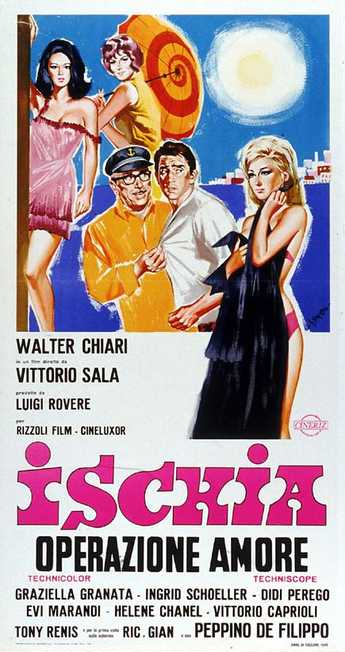
- Title ISCHIA, OPERAZIONE AMORE
- Release date(s) 1966
- Genre COMEDY
- Running time 86 Min
- Production RIZZOLI FILM, LUIGI ROVERE PER LA CINELUXOR
- Direction VITTORIO SALA
- Starring: Hélène Chanel, Alberto Cevenini, Walter Chiari, Umberto D'Orsi, Peppino De Filippo, Ermelinda De Felice
- Photography: Aldo Giordani
- Editing: Tatiana Casini Morigi
- Music: Roberto Nicolosi
Plot
The film is made up of some of the events which run parallel and intertwine sometimes their plot. Main characters are: Capatosta Gennaro, owner of an inn whose main attraction is the special attention which they are made subject to the elderly and moneyed customers by the son of the owner, Peppiniello, who, however, against the fatherly exhortations, prefers to order to devote his time to his young wife. Then there is Enrico Tremalaterra, a football player athletically unusable now, he can sign a contract with a business woman, Flavia Petrazzi, when she realizes that she had been cheated, Tremalaterra forces to deal with commitments of eve other kind. Finally Frida, a German girl kept by a wealthy Sicilian nobleman, who finds a way to betray the protector with Mark, a young extravagant inventor.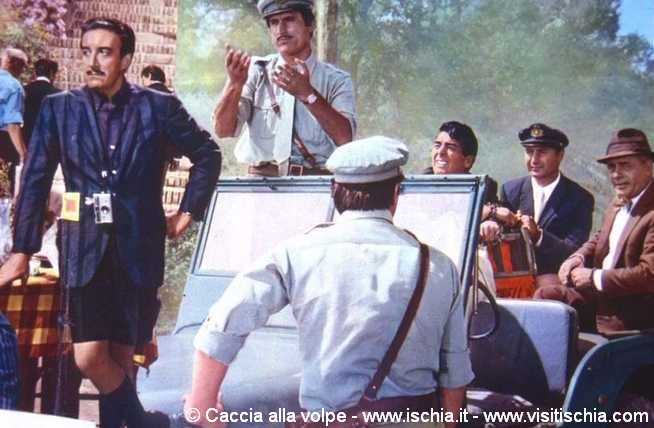
Else isolate, repeatedly used for filming, is the village of Sant'Angelo, a lovely site by Mediterranean colors, the houses huddled together, animated streets until late at night and sent a promontory that rises in sea just a few meters from the village, as can be seen in the movie "Caccia alla volpe". And then there is the legendary Fungo, symbol of Lacco Ameno. The ancient tufa rock, called by the ancients "the rock of the mullet", due to its particular shape appeared several times in the film Cineriz, and can be counted among the island’s most famous icons worldwide.
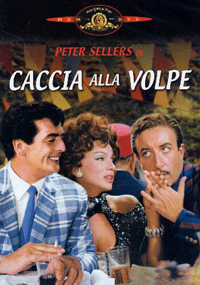
- Title CACCIA ALLA VOLPE
- Release date(s) 1966
- Genre COMEDY
- Running time 103 Min
- Based on A COMEDY BY NEIL SIMON
- Production MONTORO, CINECITTA', NANCY ENTERPRISES INC.
- Direction VITTORIO DE SICA
- Starring: Peter Sellers, Victor Mature, Britt Ekland
- Photography: Leonida Barboni
- Editing: Russell Lloyd, Adriana Novelli
- Music: Piero Piccioni, Burt Bacharach
Plot
To Cairo was stolen a large quantity of gold and the Interpol thinks he can recover controlling the only person who may be interested in the experience and cunning way to introduce in Italy the gold bars, known as "The Fox". He, who in prison has been appointed by the organizer of the coup to transfer the gold, when he learns that his sister Gina is very attached to which is not leading a virtuous life, decides to escape and went to Rome. But Gina is simply taking part in the shooting of a film and his brother took the opportunity to seize the material recovery and organize themselves for the landing of gold. He went to Sevalio (S. Angelo d'Ischia), a small fishing village, posing as the director Fabrizi, gets the participation of the star is no longer young Tony Powell will ensure the support of the corporal who acts as a force in public country and start shooting a film comprising the chaotic scene of the landing gold in Cairo. But Interpol closing just Sevalio, so all the participants in the film end up in court and the Fox returned to prison except for rievaderne in the spring. The local newspaper Chronicles of the two gulfs (No. 7/1965) it reads: "The square of the village of Sant'Angelo is bustling in these days. It turns, in fact, most of the exterior shots of the movie "Caccia alla volpe" (the title is metaphorical) produced by Montoro Film directed by Vittorio De Sica. Just a short wlak from the sea arose, as if by magic, the church and the town hall of an imaginary country Sevalio".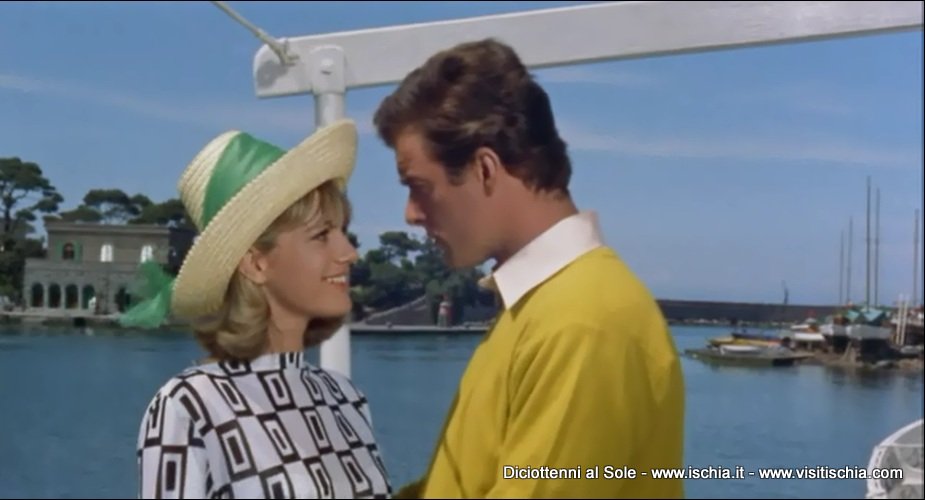
“Eighteen in the sun”, Film made in '62 by Camillo Mastrocinque, shows the island with the means used by Rizzoli. The plot is simple; young people come to the island for a weekend, and take the opportunity to conquer. What better way to show the beauty of the island.
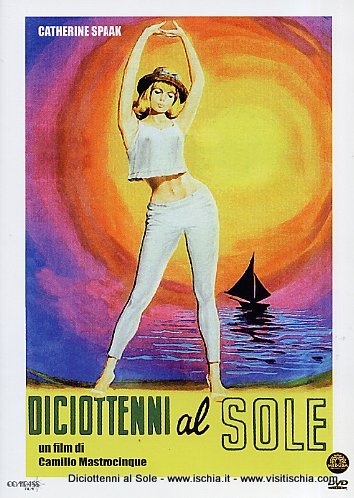
- Title EIGHTEEN IN THE SUN
- Release date(s) 1962
- Genre COMEDY
- Running time 92 Min
- Production DDL
- Direction CAMILLO MASTROCINQUE
- Photography: Riccardo Pallottini, Gastone Di Giovanni
- Editing: Gisa Radicchi Levi
- Music: Ennio Morricone
Plot
Three young: Lello, Nanni, Nicola come to the island for a vacation. They join to a group already present on the site and is working tirelessly to conquer the hearts of women. Niola falls in love, thanks to the coincidence of a name identical to a French girl. Lello, to woo a beautiful German girl, attends a local young man, Vania, which gives German lessons. Nanni, to reach the inaccessible island beauty of Franca, pretends to be an escaped convict from the prison of Procida. The engagement of Nicola with the same name and brogues Lello with the beautiful German teacher crown the short vacation. Nanni will be abandoned by Franca, when this fraud will be discovered.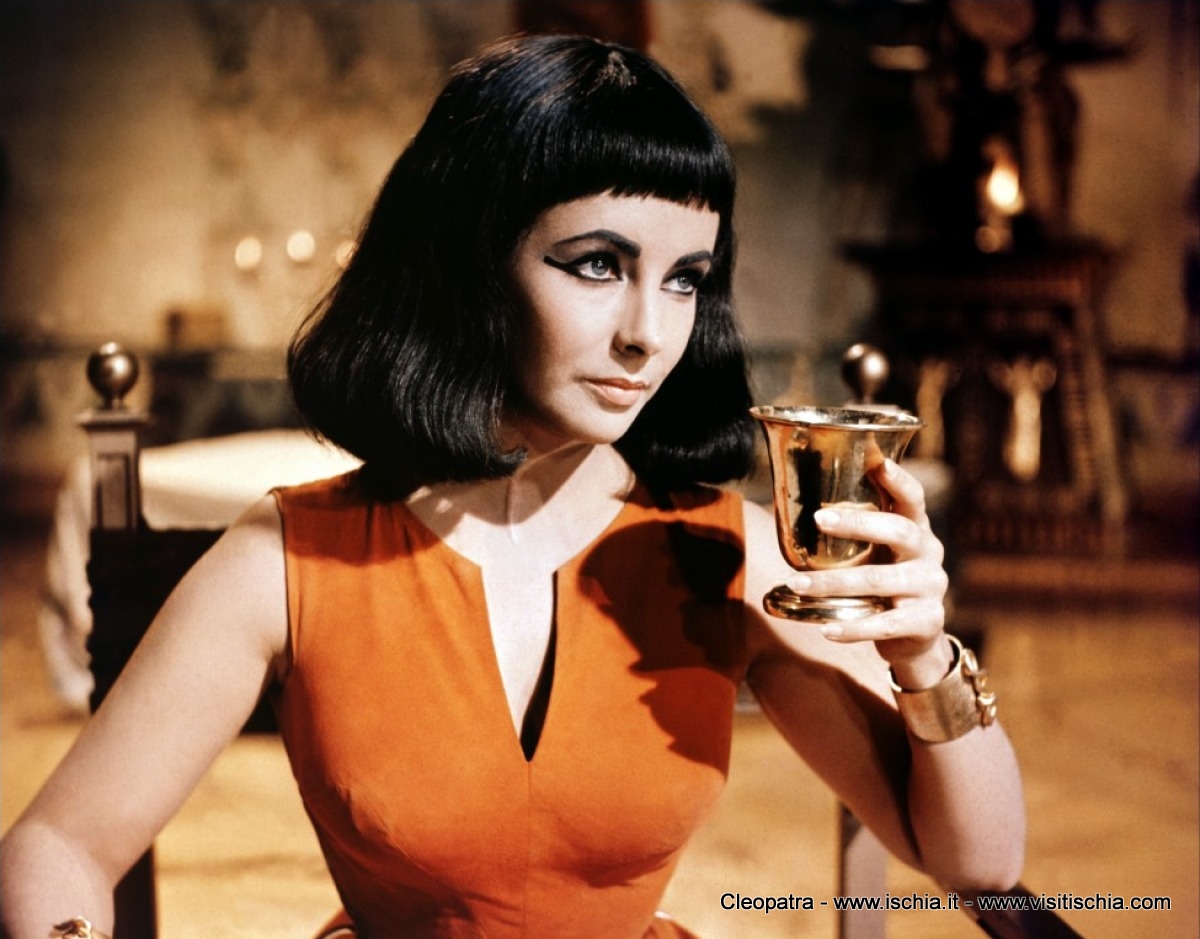
In this epic film Ischia offers its imposing castle as a backdrop for the battle of Anzio, but no text is cited Ischia as location, all the literature that deals with this film tends to highlight the history of production, leading to the replacement directed by Rouben Mamoulian already started in London and completed in Rome by Joseph L. Mankiewicz. Probably come to the island for the filming is due to Giovanni Messina, who was then responsible for the organization of the film. He had the task of helping the directors to overcome the various obstacles, such as obtaining permits, select the extras and treat props. When was shot "Cleopatra", he was asked to find photos of the island, and he sent them to Rome, where was shooting the film, the director who wanted fascinating then come to Ischia to keep shooting. The success of the film, although huge, was not enough to cover the entire expenditure, and to no avail, the nine Academy Award nominations, and four awards (photography, set design, costumes, special effects), the Fox failed to avoid bankruptcy.
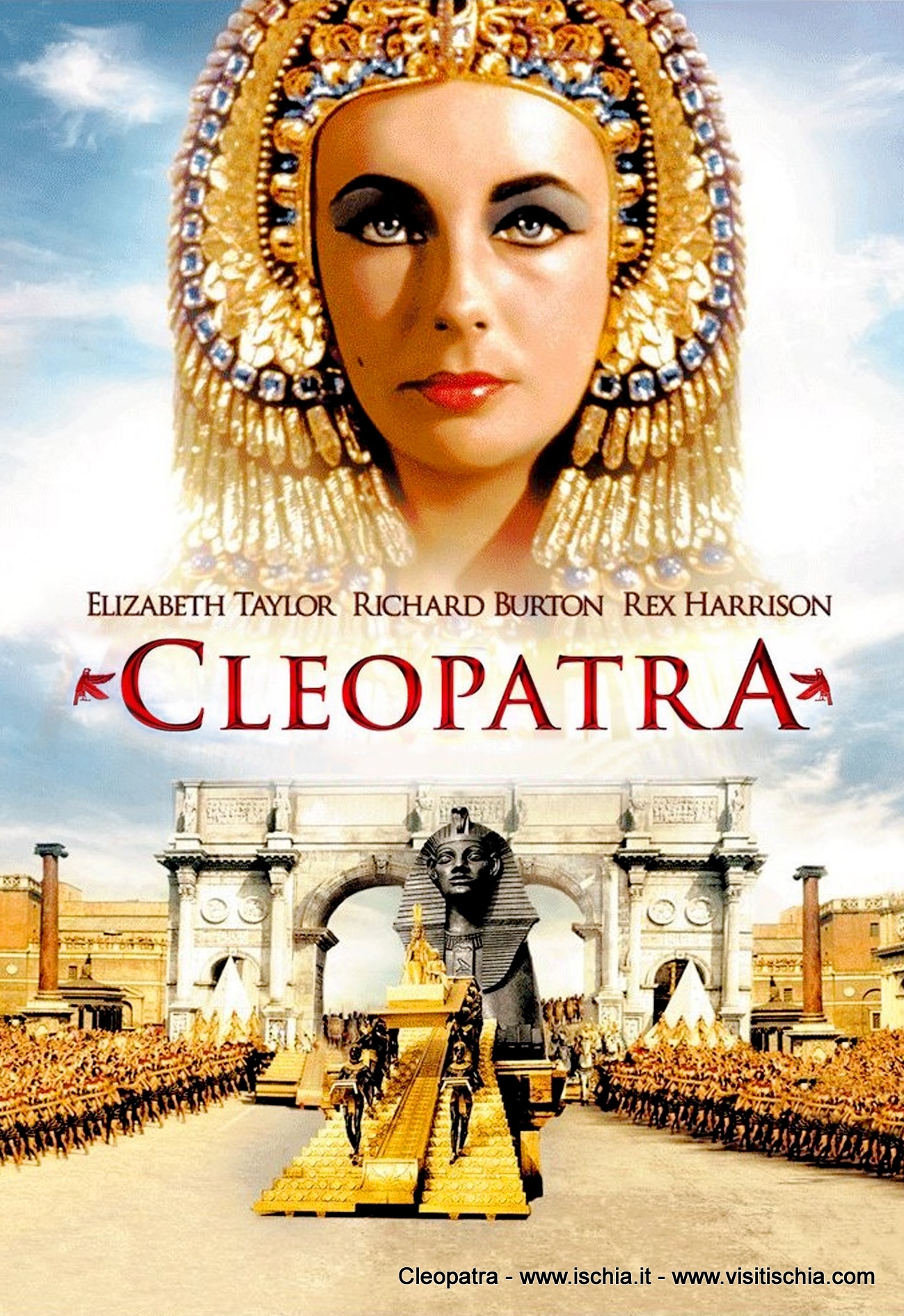
- Title CLEOPATRA
- Release date(s) 1963
- Genre Historical
- Running time 243 Min
- Based on WORKS BY: PLUTARCO, SVETONIO - APPIANO
- Production WALTER WANGER PER TWENTIETH CENTURY FOX
- Direction JOSEPH L. MANKIEWICZ
- Starring: Elizabeth Taylor, Richard Burton, Rex Harrison
- Photography: Leon Shamroy
- Editing: Dorothy Spencer, Elmo Williams
- Music: Alex North
Plot
The famous story of the Queen of Egypt and her lovers: first of all Caesar - with whom she had a son, Caesarion - then Anthony, who for love of him break his engagement to Octavia. After the war and the defeat of Antony at Actium (September 2, 31 BC.), the queen decides to put an end to his life by poison of an asp. It won 4 Oscars: photography, set design, costumes, special effects, among primates as many changes of costume: Taylor wore 65.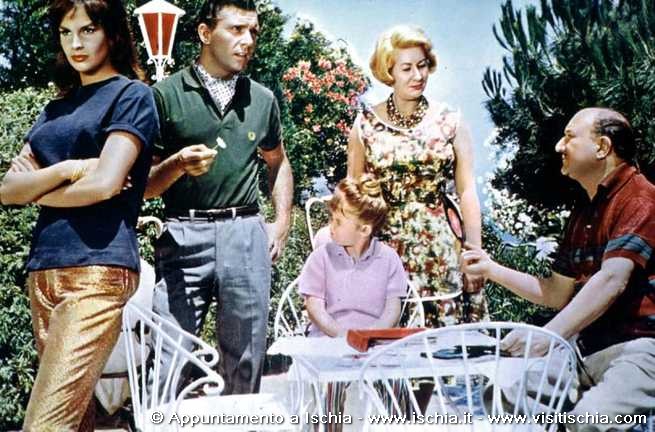
NIn '60, directed by Mario Mattioli, the film "Appointment in Ischia", where Mimmo, or Domenico Modugno, is a famous singer, a widow with a daughter, Letizia, to whom will give a mother. But the girl does not accept the current girlfriend of her father, growing fond of a young man, who wants as mother. The child creates many situations, such as coming to Ischia for treatment with mud, so that the two would meet and s' fall in love. Obviously in this case the location preference are those of Lacco Ameno, with a beautiful waterfront scene of the course that connects Casamicciola to Lacco Ameno traveled by carriage from Modugno with his daughter.
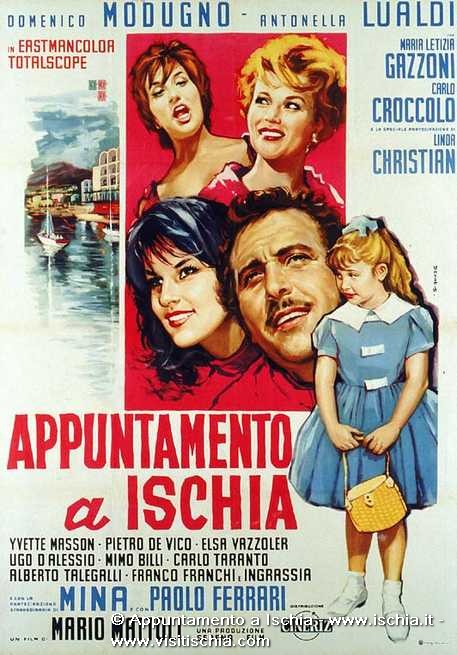
- Title APPUNTAMENTO A ISCHIA
- Release date(s) 1960
- Genre COMEDY
- Running time 99 Min
- Production ROMANO DANDI PER LA SERENA FILM
- Direction MARIO MATTOLI
- Starring: Domenico Modugno, Ciccio Ingrassia,
Franco Franchi, Mina, Pippo Franco - Photography: Roberto Gerardi, Marco Scarpelli
- Editing: Adriana Novelli
- Music: Gianni Ferrio
Plot
Mimmo is an acclaimed singer of modern songs, which leads around the world for his art in continuous torunées. The singer is widowed and has a daughter of nine years, Letizia, who is forced to follow his father in his wandering, unless Mimmo decides to put her in college, would recommend as Mercedes, his partner and friend of art. Letizia is introduced to Mirella Argenti, a good girl, the daughter of musicians and engaged to a conductor, Paolo and this chance encounter awakens in the child the desire to have Mirella as a mother and causes it to implement the tricks to make his dream come true, and Mercedes has moved away. The wiles of Letizia cause embarrassing situations that lead Mimmo to put the child in college, and the resume at home, to her delight, just after marrying Mirella.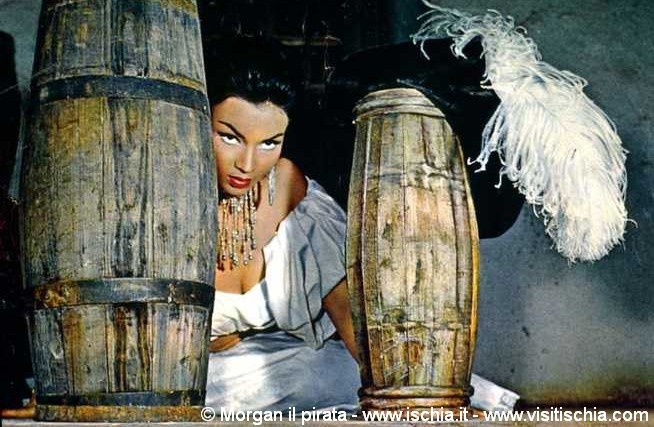
Another realization of the adventure genre Ischia is the film "Morgan the Pirate" of '60, of the director Primo Zeglio, that in the context of popular cinema, is a spectacular exhibit of large plant and sufficient to cover the favorite genres of the '50s and 60s. The row repeats the images of the figure of Henry Morgan, whose exploits have already been documented in other films where this does not go away. The preferred locations in this film are the area of Punta Molino, Ischia Ponte, Lacco Ameno and the Maronti beach, perfect setting for a fight between pirates. In spite of the beautiful scenery, the film was considered a ridiculous adventure film, supervised by a Andre de Toth, who plays of accumulation: people, facts, actions, to mask the void on which it stands. Just on the basis of these considerations, it seems appropriate to recall how much they had in the movies, places, and environments of Ischia. We can assert without doubt that the main protagonist of the film is the island in its entirety.
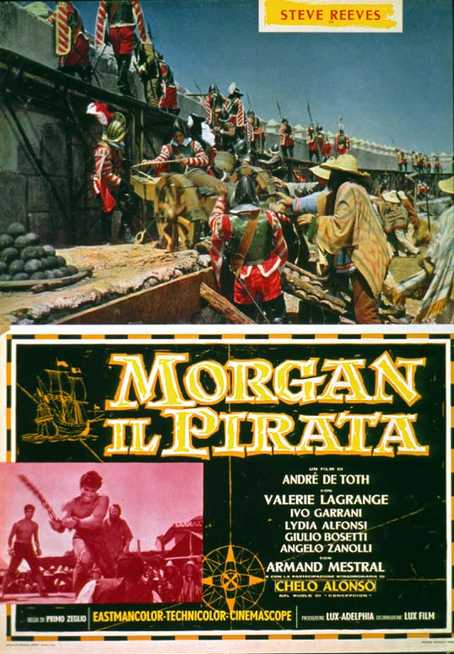
- Title MORGAN THE PIRATE
- Release date(s) 1960
- Genre ADVENTURE FILM
- Running time 103 Min
- Based on THE NOVEL BY EMILIO SALGARI
- Production LUX FILM, ADELPHIA CINEMATOGRAFICA
- Direction ANDRE' DE TOTH, PRIMO ZEGLIO
- Photography: Tonino Delli Colli
- Editing: Maurizio Lucidi
- Music: Franco Mannino
Plot
HHenry Morgan, being in slavery, is bought by Ynes, daughter of the Governor of Panama. In love with the woman, is deported on a Spanish galleon, which seizes with the other prisoners, who recognize him as their leader. He directs the ship to the island of Tortuga, redeems Ynes, who had been taken prisoner, and resumes the sea. Morgan performs extraordinary feats, alliance with England and try to seize Panama, but the company fails. Organized a second expedition, try to approach the city by land and manages to win her over. In the Governor's palace is an immense booty, but the thought of Ynes, which he believes far, traveling to Spain, saddens him. You will find it rather live under a mountain of corpses, and swears to himself that he does not come off more from her (fromcinematografo.it). On Corriere dell’isola d’Ischia On the island of Ischia Courier (No. 17-1960) reads: "So also the filmmakers have invaded Ischia. This is not the first time this has happened since Ischia have been many movies but these are the pirate Morgan led all the features of the new cinema environment. An environment that wants to be intellectual and instead is flat and dull. And all these nice people what you can achieve? Only the useless meatballs that are certainly not honor the Italian cinema. The belly of Chelo Alonso, the muscles of Steve Reeves and his stunt, the sine of Valery Lagrange and some galleon fire form the main emotion of the film. We must hope that the natural beauty of our island saved part of the film. The trouble is that in the movie Ischia is an island in the South Seas.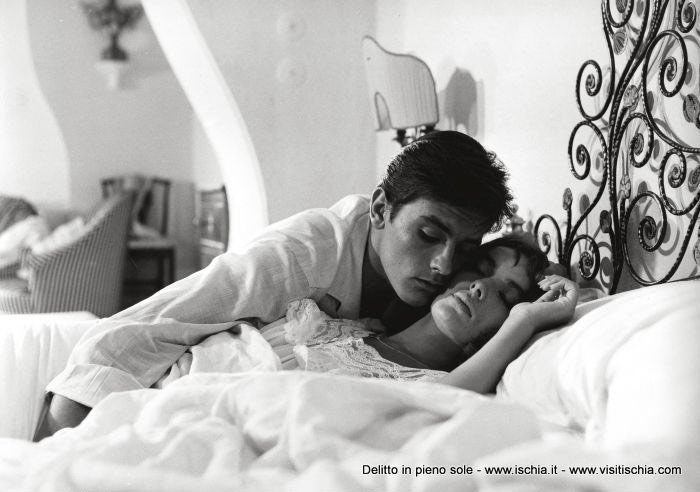
In '59 in Ischia, is the film "Plein Soleil" directed by Rene Clement, a French director who entrusts the title role of Alain Delon, who at 24 years old has his first major interpretation, a character from the face of an angel and the soul of evil, which would make him the star of France, a symbol of the '60s - '70 (Canova, 2000). The film is based on the novel by Patricia Highsmith, who creates a character, ambiguous and fake lives of scams, and do not hesitate to kill in order to improve his social position.
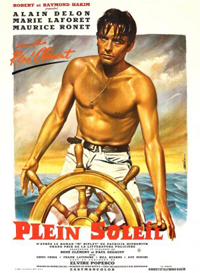
- Title PLEIN SOLEIL
- Release date(s) 1960
- Genre DRAMATIC THRILLER
- Running time 120 Min
- Based on THE NOVEL BY PATRICIA HIGHSMITH of 1955
- Production TITANUS PARIS CCFC
- Direction RENE' CLEMENT
- Starring: Alain Delon - Maurice Ronet - Marie Laforet
- Photography: Henri Decaë
- Music: Nino Rota
Plot
Tom Ripley is sent to Europe by Mr. Greenleaf in search of his son Philippe, to take him home: Tom in return will receive five thousand dollars. Philippe tricks Tom into thinking that he will return to the U.S. with him to please his father, but in reality it has no intention and intends to stay where he is, alongside his girlfriend Marge, who is about to marry. Mr. Greenleaf, seeing no result, he fired Tom, in desperation, kills Philippe and assume the identity, living his life as a rich playboy. But Philippe's friends begin to miss him and begin to look for it, while the tracks leading to Tom, who is forced to commit another murder to avoid being discovered.
The first film produced by Rizzoli was: "Suor Letizia" in '56, already described at length in neorealism. The following year, again directed by Mario Camerini, the production continuous with the film "Holiday in Ischia" in which several episodes intertwine against the backdrop of beach life and social life of the island, where even in the movie, Ischia, with its sun and its beauty attracts many visitors, who come from all over to enjoy the holidays. More attention on Lacco Ameno, with the luxurious "Regina Isabella" with its thermal baths, the Fungo and its enchanting sea. One way to show other parts of the island as the beach of San Montano, the Church of Soccorso, is the role of the guide, in this case of a young islander, who with his scooter shows the island with a French couple. An interesting film island, there is also the story of Paolo Stoppa who had lively quarrels with Vittorio De Sica.
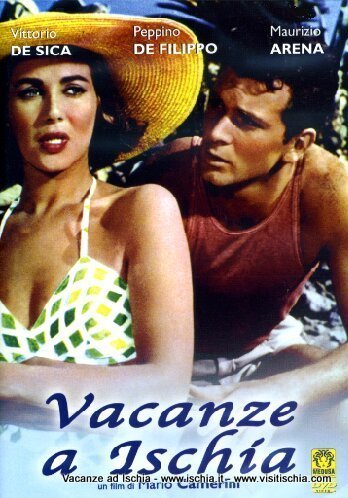
- Title VACANZE A ISCHIA
- Release date(s) 1957
- Genre COMEDY
- Production RIZZOLI FILM - ROMA / FRANCINEX (PARIGI) BAVARIA FILMKUNST - MONACO
- Direction MARIO CAMERINI
- Starring: Vittorio De Sica, Myriam Bru-Paolo Stoppa, Pippino De Filippo
- Photography: Otello Martelli
- Editing: Giuliana Attenni
- Music: Alessandro Cicognini
Plot
Ischia with its sun and its natural beauty attracts visitors, coming from all over to enjoy a pleasant holiday period. There comes a lawyer who dreams of a little rest and instead spends all his time in agitated for fear of causing the death of a street urchin, tossing a coin into the sea, there is also an engineer, peaceful man, if ever there was able to appreciate the sweetness of living to which four youths make a terrible joke, creeping in the soul the suspicion that his wife is cheating, and that the child she is expecting is not his, there are these four young men, always short of money, implanting the fake baths to exploit the credulity of strangers. Brought to the police station they’re doing with a little fear, thanks to the intervention of the engineer who knew them and to whom they confess their fierce joke, restoring tranquility. One of them falls in love with a nurse seriously and will be paid. And behold, two French grooms came to Italy to rekindle the feelings that brought them together and now it is languid, they depart as soon as possible when the husband realizes that his wife is not insensitive to the attentions of a young islander. In the midst of the events do not always chaste usual, there are also some spicy note: a process for indecent exposure, in which the courts as defendants, show more morbid curiosity than concern for justice. Passes for all the holiday season, but the island continues to shine in the sun.
The German director and screenwriter Alfred Weidermann, made famous in the international arena from the movie "Canaris", directs with a good job, but not particularly inventive, some of them with two romantic comedies Romy Schneider: "Kitty" and "Scampolo", originating from the homonymous play by Dario Niccodemi, or "Sissi a Ischia" that exploits the popularity of the movie played by Schneider in "Princess Sissi". The film allows a thorough knowledge of the island as you start telling the story and show the pictures of everyday life in the country. The protagonist, remnant, working as a tour guide showing tourists the beauty of the island and just like driving enters the Aragonese Castle buy brand viagra. The director with this film allows the German population to enrich the beauty, but also the radiance that Ischia, the film conveys. Ischia rises climax of the film industry with this film, a series of images that our protagonist allows us to see with the precise purpose of the film, to seize the island in all its charm, every fact, every conflict as the viewpoint of Serrara, the Church of Soccorso in Forio, and the square with the background of the Aragonese Castle, the ubiquitous bar "Coco Gelo". Some scenes were also shot in Piazza Croce, on the beach of St. Pietro and Riva Destra.
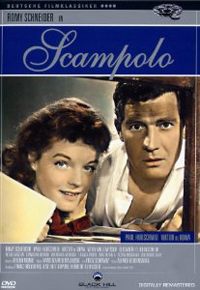
- Title SCAMPOLO
- Release date(s) 1957
- Genre COMEDY
- Running time 95 Min
- Based on COMEDY OF DARIO NICODEMI
- Production UFA INTERNATIONAL
- Direction ALFRED WEIDENMANN
- Starring: Viktor De Kowa, Paul Hubschmid,
Romy Schneider - Photography: Bruno Mondi
Plot
(Sissi, Empress of Austria, has nothing to do, wanted to use the name by which Schneider had become famous). The film takes place entirely in Ischia and starring Scampolo, a girl who lives by the day without too many worries, until she meets the man she falls in love. He is an architect penniless chasing a distant dream, which is to win a competition for the best design of a modern neighborhood in Naples. Scampolo, in its way and will help when an unfortunate coincidence, the chest, sent to Naples, containing the project architect, will not be served by the post office, she will not hesitate and she will bring the case to the Ministry . The delivery is proving difficult, but remember Scampolo who will know the Minister, with whom he had a brilliant conversation at a party in Ischia, and then everything becomes easier. The Minister, moved by the story of Scampolo, decided to accept the cash over the period fixed for delivery and give you a very good chance for winning the competition. Finally, the project of the architect will be approved with great joy of the married couple.
In Suor Letizia, it tells the story of a nun who returns to Italy after years of missionary work in Africa and is immediately sent to deal with the sale, in Ischia, a decayed convent. The impact of the nun in the island can be summarized by the comment that says, "This is worse than in Africa, sisters". In fact, life is hard work in the fields extreme, the children steal the goats, the fishermen do not have the money to buy the nets, the island is depopulated by emigration". On the Island it is evident that there is still no sign of tourism. Sister Letizia off the vaporetto, solitary, only serves to bring the boat back to Naples or the villagers, who go to work. This film was not appreciated by many critics considered it a melodrama full of affectation.
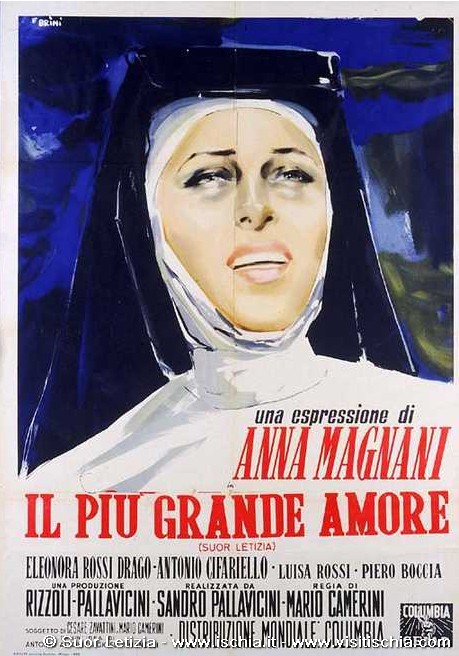
- Title SUOR LETIZIA
- Release date(s) 1956
- Other titles IL PIU' GRANDE AMORE
- Based on AN IDEA OF ANTONIO ALTOVITI AND GIOSE RIMANELLI
- Genre PSYCHOLOGICAL DRAMA
- Production SANDRO PALLAVICINI PER RIZZOLI FILM, PALLAVICINI
- Direction MARIO CAMERINI
- Photography: Gianni Di Venanzo
- Editing: Giuliana Attenni
- Music: Angelo Francesco Lavagnino
PLot
Sister Letizia (Anna Magnani), a nun who has spent twenty years in the African missions and has just returned to Italy, is sent to an island in the Gulf of Naples (Ischia), where a monastery is in a precarious state. She will have to adjust in the best way all the slopes, close the convent and bring the little sisters to the church. While she devoted herself to the task entrusted to her, Sister Letizia knows a poor abandoned child, whose sad fate inspires a deep understanding and Salvatore has no father, his mother Assunta is about to leave him to follow in America Peppino, a worker who promised to marry her on condition that she give up the child. Moved by a feeling of heartfelt piety, Sister Letizia welcomes in the convent Salvatore together with other children will reopen the school, everything is renewed and reborn. The monastery rises to new life. Gradually Sister Letizia feel awake in my heart a feeling unknown, a maternal feeling, which drives her to become attached to particular Salvatore. But soon the Superior calls it, and she has to be separated from his protected, which belongs to his real mother. Sister Letizia went to Naples and convinces Peppino to make adjust his relationship with Assunta and take Salvatore. The separation from his protected is the sister painful, but the future of the child is assured.
Many of these films use the island only as a location, as in the case of the film shot in '45, just after the Second World War, "Island Monster" of 1953, directed Roberto Bianco Montero, in which the horror arises by subtraction rather than visionary power, as in the character of this film, sublimated in the collective icon stout and staggering, with his face sewn up, the monster of Frankenstein.
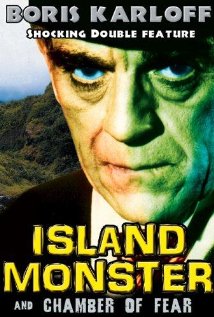
- Title SLAND MONSTER
- Release date(s) 1953
- Genre DETECTIVE STORY
- Running time 90 Min
- Production FORTUNATO MISIANO PER ROMANA FILM
- Direction ROBERTO BIANCHI MONTERO - FRANK FED
- Starring: Boris Karloff, Gianni Breschi, Bruna Camerini, Giuseppe Chinnici, Alberto D'Amario, Domenico De Ninno, Angelo Dessy, Jole Fiero, Carlo Duse, Clara Gamberini, Giuseppe Addobbati, Giulio Battiferri, Germana Paolieri
- Photography: Augusto Tiezzi
- Music: Carlo Innocenzi
Plot
An officer of the financial police, Lieutenant Andreani, who has a particular expertise in the fight against drug smugglers, is sent to the island of Ischia, where it is suspected that this form of smuggling has one of the most important towns. No one suspects, however, that the leader of the smugglers is Don Gaetano, the benefactor of the island, the man who founded and maintained at his own expense a hospital for sick children or sickly. The investigations started by Andreani irritate Don Gaetano, who is to induce him to desist kidnap the daughter of Lieutenant. These will not be intimidated and flows into the fight with greater commitment posing as a broker, who wants to negotiate the purchase of drugs, Andreani goes into the den of smugglers, where he finds to his surprise an old acquaintance, the singer Gloria D 'Auro. The woman, however, not the complaint and he can continue in fiction. With the help of Gloria, the child is released; meanwhile Andreani with her around the house, Don Gaetano and stop the smugglers. But the old man manages to escape with the girl, who took over after Gloria mortally wounded. Andreani chasing the offender and with the help of the Czar, the faithful shepherd, fond of the child, is able to capture it, saving her daughter.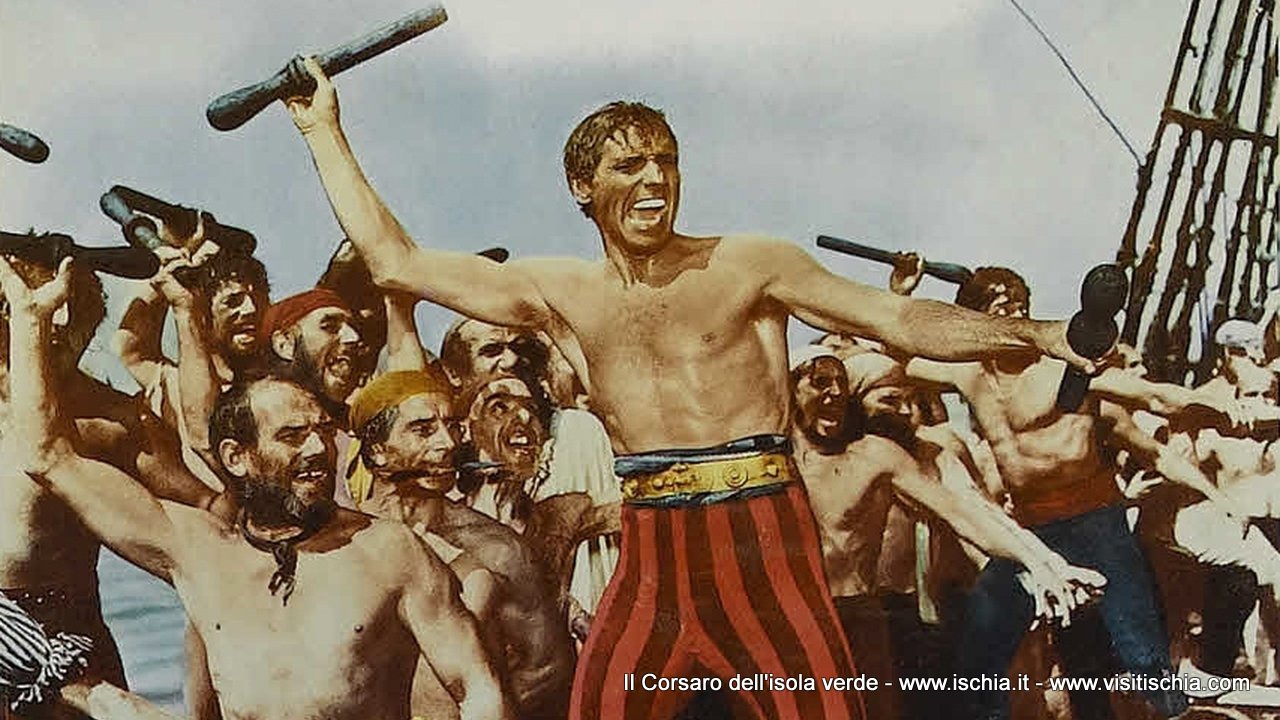
Of great importance for a wider knowledge of the island, not only in Italy but also abroad, was the making of the film "The Crimson Pirate" released in '52, directed by Robert Siodmak, inspired by some sequences of the swashbuckling film "the Black Pirate", which it is said that back in the '20s, the silent movie star Douglas Fairbanks Sr., had asked the production house to realize in Ischia this film, but the proposal fell into nothingness. It is also noted in the film, an unexpected propensity of Siodmak have the best in the comic acrobatic couple Lancaster - Cravat "invented" by Tourneur for the film "The Legend of the archer to fire".
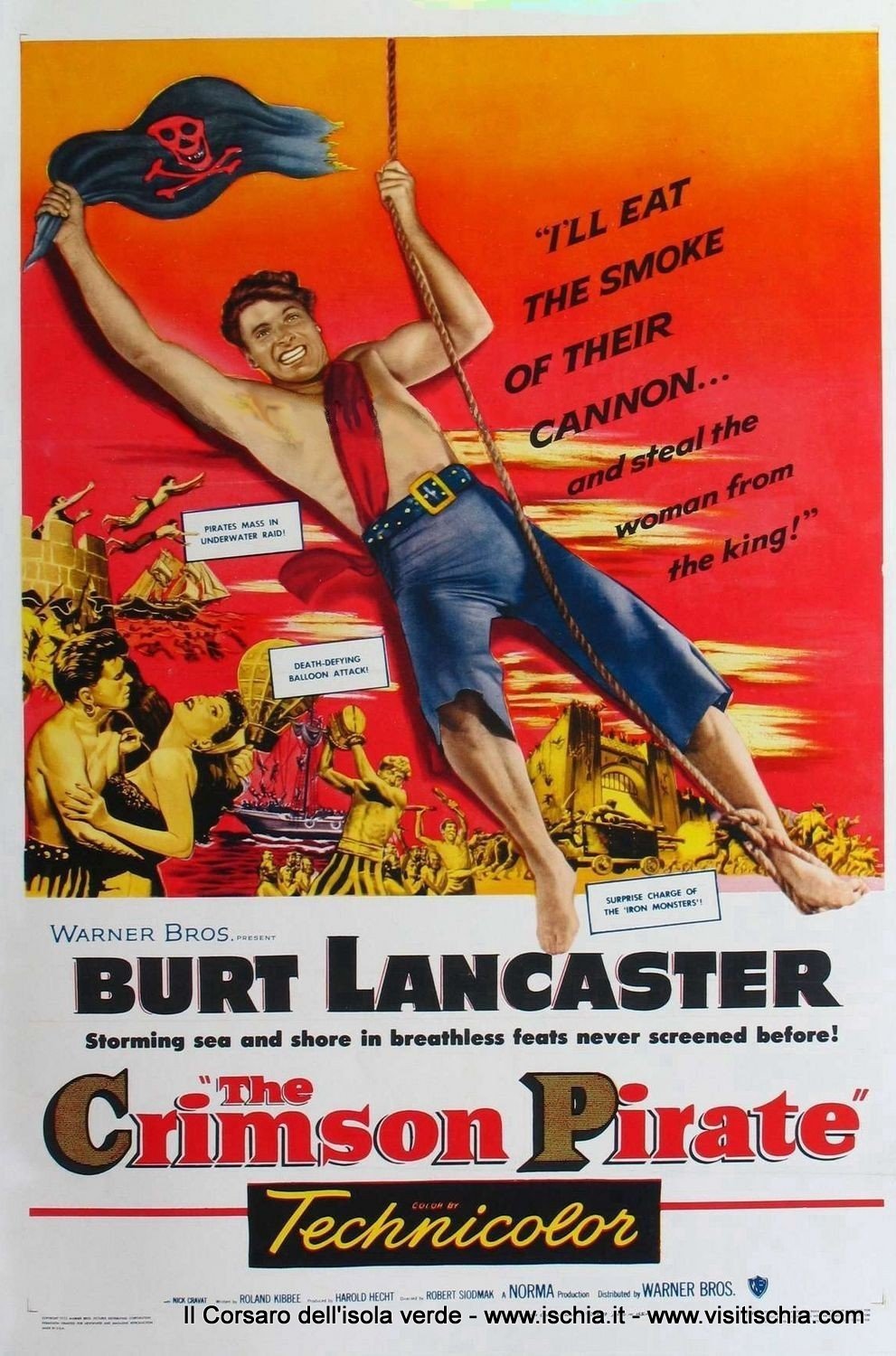
- Title THE CRIMSON PIRATE
- Release date(s) 1952
- Genre ADVENTURE FILM
- Running time 104 Min
- Production HAROLD HECHT/NORMA PICTURES
- Direction ROBERT SIODMAK
- Photography: Otto Heller
- Editing: Jack Harris
- Music: William Alwyn
Plot
A pirate brig, under the command of the famous Captain Vallo, catching in the Caribbean Sea a Spanish galleon with arms, ammunition and 200 soldiers under the command of Don José Gruda, sent to fight the rebels of the island Salina, led by El Libre. Vallo decided to sell weapons to the rebels, but in the meantime pretends to accept the proposals of Don José who offers him 50,000 florins to deliver El Libre. The ship arrives at the port: overnight Vallo down to earth with a man of the crew and met Consuelo, daughter of El Libre, from whom he learns that his father is in prison. He promises to get rid of it, with her back on the galleon, where wearing the clothes of Don José, while the sailors wear the uniforms of the soldiers. Taken to the envoy of the King, Vallo can release El Libre and the scientist Prudence, but identified, had to take refuge with others on the galleon. Here the pirates who hoped to sell arms, realizing that Vallo wants to give her the insurgents, mutinied. In the conflict El Libre is killed and Vallo and Prudence, chains, are lowered into a boat and adrift. However, they are saved and landed safely. Having become a rebel leader, Vallo vanquishes opponents, regaining the galleon and free the island (from cinematografo.it ). "Admirable history of one of the many adventures of the famous Captain Vallo (Burt Lancaster), undefeated champion of piracy, terror of the Caribbean Sea, thief of treasures and ... hearts. Although the story takes place in the eighteenth century, we see a balloon used in battle, powerful explosives and a submarine. But, being pirates, it would be dangerous to make any objections or questions: do therefore an act of faith, and if you cannot believe everything you think one half "( Novelle FILM, N. 502/1957 ).(Novelle Film, n. 502/1957).
"The cliff of sin" of '50, directed by Roberto Bianchi Montero, was a film made especially in the municipality of Forio, the unmistakable image of the Church of Soccorso. It tells the story of a woman to ruin an entire country, Ischia. (Mereghetti, 2002). The island is crucial to support the film, which, though attended by Gino Cervi, is quite labile in the plot.
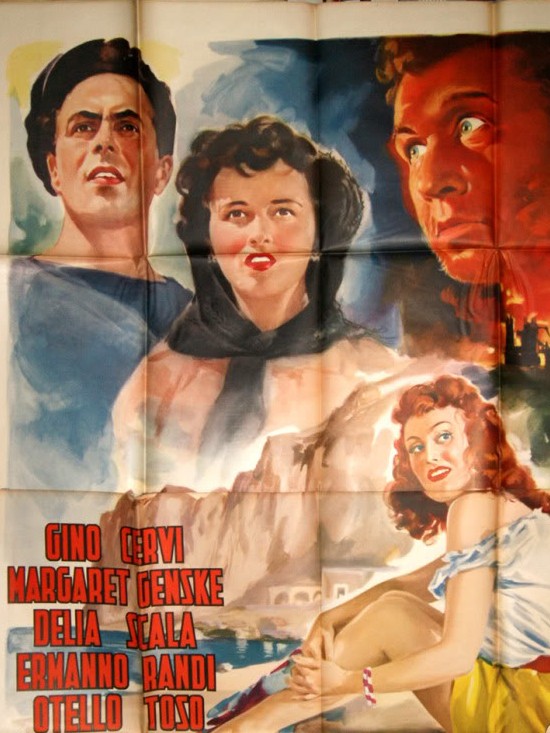
- Title THE CLIFF OF SIN
- Release date(s) 1950
- Genre DRAMA FILM
- Running time 93 Min
- Production INTERNATIONAL URANIA FILM
- Direction ROBERTO BIANCHI MONTERO
- Starring: Virginia Balistrieri, Gino Cervi, Augusto Ciabatti, Silvia Fazi, Margaret Genske
- Photography: Carlo Nebiolo
- Music: Alberto De Castello
PLot
Silvano, a man of mature age, sickly and misanthropic, addicted to alcohol, lives alone in his hut. One day reappears in the island Stella, a young woman of dissolute life, which has been the bane of Silvano. She goes to him, trying to seduce him again, but when she sees the old man only wants to hide the stash, causes a dose of medicine so strong as to cause death. Stella is so mistress of the hut and the hoard, and took to the country, manages to seduce Paul, a young fisherman. He, experiencing the charm of the sorceress, neglects his girlfriend and gets involved in shady dealings of a band of smugglers. Michele, suddenly back in the country, imposes Paul to fulfill his promise to his sister, but then surrenders himself to the seduction of Stella, which in turn becomes her lover. Involved in the smuggling, Michele is at first arrested, then released after some time. He went to the hut of Stella, surprises her with Paul, between the two men kindled a violent brawl. Stella, which seeks to foster Michele, is rejected and falls into the sea. Missing the enchantress, the two men are forced to shake hands: the island returns in peace.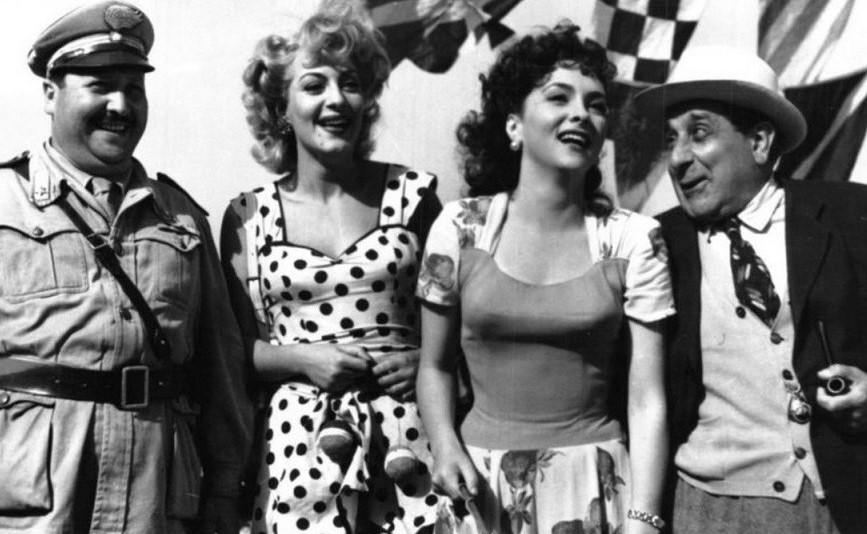
The film "Ok Agostina" of 1949, directed by Luigi Zampa, seems to show the island at that time real enough. Immediately after the war, in fact, in the film, Agostina and Australia landed in Ischia, after receiving the deportation order for being prostitutes, in a landscape still ravaged by war. Life seems to start for them. Ischia is a land of work, where the port cleaning the barrels, probably due to a recovery in exports of "Forastera" typical white wine of the island, it is a poor country where it does not take much to have fun: parties are organized by country races the sack race on the beach. The piles of rubble that mark the landscape are not the only legacy of the war, there is also the sad phenomenon of abandoned: the illegitimate children born as a result of permanent employment of the crew, refused to shame by their mothers, are welcomed in the small church of Santa Maria del Soccorso and caring for them is a priest (Eduardo De Filippo) who must struggle against the insensitivity of the country and in particular of its notables. Inspiration of bad criticism levied in that movie is just the director's position, which - according to Aristarchus - it was believed in duty to take, very clumsily, the defense of the unfortunate victims of venal love against the bourgeois conviction.
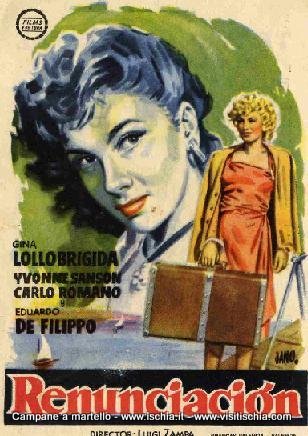
- Title Ok Agostina
- Release date(s) 1949
- Genre Dramatic
- Running time 100 min
- Production CARLO PONTI PER LA LUX FILM
- Direction LUIGI ZAMPA
- Main actors: Eduardo De Filippo, Gina Lollobrigida,
Yvonne Sanson, Carlo Romano - Photography: Carlo Montuori
- Editing: Eraldo Da Roma
- Music: Nino Rota
Plot
Agostina is a maid, that after the war has set out to make a "Miss". Her savings sends them away to the priest of his country, why keep them to him. Left allies, Agostina goes to the country, to withdraw her money. But here is waiting for a nasty surprise. The old priest died and the new one, Don Andrea, not knowing at first in which use is intended that sum, it’s worth to create an orphanage. Now the money have been spent and Don Andrea calls for more help. When she learns the true origin of savings of Agostina, Don Andrea, sick of heart, remains nearly electrocuted. To return at least part of the money, imagine a ruse. He rings the bells and people rushed to declare that no longer has the means to provide for orphans. She has applied unsuccessfully to the mayor to allocate the money collected at the hospice to erect a monument. Now he has to close the hospice and the orphans entrusted to the population. The girls spend the night crying on the steps of the churchyard, but the mayor in the face of protests from the population sends the money to the priest, who wants to deliver Agostina. But she renounces and Don Andrea, for the various emotions, dies. Clearly identifiable various places on the island.
Member of the instance is the neorealist film "Angelo", of 1950, directed by Francesco De Robertis, who, inspired by true events, is intended as a call for justice to the resolution of one of the most difficult problems that the war has involved. It is the issue of racial difference, he had already found a place, and in the same terms in the song "tammurriata nera", certainly affect the sensitivity popular. Ischia with its natural location and with the help of the "pharmacy Mirabella" and "Caffè" of the Signorine "Fiurinte" offers settings to the events narrated in the film, also being a victim of social upheaval, related the barbarian raids occurred in the past. The film tends to be positive, but the thorny topic makes a show is not suitable for young people (Bianchi, 1950) can be considered a seemingly conventional melodrama, but who knows how to address the issue of racism with an intensity and an originality able to avoid any loophole to bring out the problem in its entirety. The double soundtrack, made of Neapolitan music and American music and jazz blouses, emphasizes the incompatibility of two opposed universes, although both marked by exclusion. (Mereghetti, 2002).
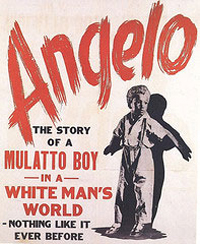
- Title ANGELO
- Release date(s) 1950
- Genere WAR FILM
- Running time 85 Min
- Production SCALERA FILM
- Direction FRANCESCO DE ROBERTIS
- Photography: Carlo Bellero
- Music: Annibale Bizzelli
Plot
During the war, a street musician, Matteo, commits a theft and was sentenced to five years. While in prison, his wife dies in childbirth. Released from prison, goes in search of the child, care of the Sisters, but the baby is a little negro with curly hair, the result of the violence, in spite of himself, his wife, during the Allied occupation. Very shaken, wounded in the most intimate feelings, Matteo would repudiate the child, but there is nothing to do in the little mulatto is legally his son. And little by little, almost without knowing it, the man approaches the child, which is so cute, so affectionate. When the child falls ill, Matteo, trembling, is surprised to pray for his salvation. Now he loves so much that he is renouncing his beloved rather than separate from Angelo. But one day he has a negro, brother of the true father of Angelo, who died in the war. He wants to take the child with him, but is willing to leave it to Matthew, when the grandson of happiness requires it. But Angelo, impressed by the way of his uncle, the melancholic songs, hear the call of the race and clings to him. With tears in his eyes, Matteo lets go.
Forerunner of the neo-realistic vein appears to be the film "Dottor Antonio" of '39, directed by Enrico Guazzoni, which deals with the 1848 uprising. The main character, Dr. Antonio, was sentenced to many years in prison, right in the Aragonese Castle, which in fact, in the past, was a place of detention. Among his imprisoned for political offenses, they may include less than 62, the most famous: Nicola Prisco (1820-1901), Michele Pironti (1814-1885) and Carlo Poerio (1803-1867), which you spent a period between 1851 and 1852, people of great talent and culture were, with the unification of Italy, also elected deputies, and gave an active contribution to the cause of National Unity and staff. (D'Ambra, 1987). The critical, however, has not been very benevolent towards the final yield of the film. Given the importance and the possibility of the film subject, might have to perform better, but the beginning is slow and the interpretation of the actors appears to be no accents. (Di Meglio, 1937).
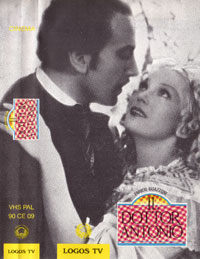
- Title DOCTOR ANTONIO
- Release date(s) 1939
- Genre DRAMA FILM
- Running time 98 Min
- Based on THE HOMONYMOUS NOVEL BY GIOVANNI RUFFINI
- Production GUAZZONI - PIETRO MANDER
- Direction ENRICO GUAZZONI
- Photography: Massimo Terzano
- Music: Giovanni Fusco, Umberto Mancini
Plot
During the riots of '48 in Italy, a doctor has the opportunity to meet and heal a serious wound to an English lady. Between the two lovers fell in love, which is interrupted by the sudden departure of the doctor to Naples, where he takes part in the revolt. Arrested, he was sentenced to many years in prison. But the English girl manages to bribe a jailer and thereby to facilitate the escape of her boyfriend.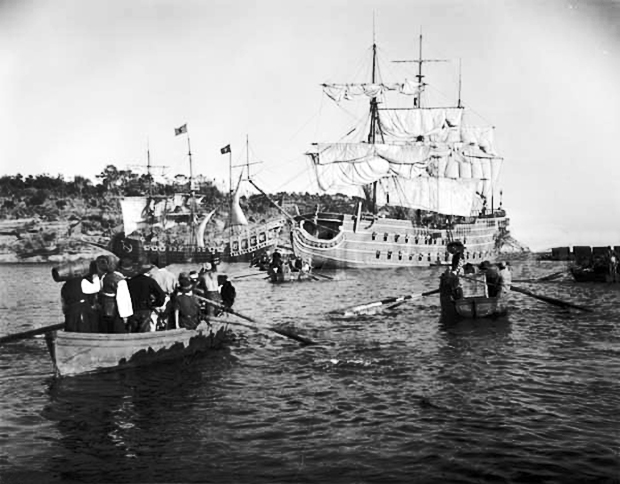
"The Black Corsair" is based on the novel by Emilio Salgari, in which our Pithecusa is smuggled to a Caribbean island. It's a popular movie, but made no economy, with real ships and a collision of excellent effect. The island offers, as a backdrop to epic duels, views of the sea and beautiful and terrible storms. Of this first film the director recalls the scenes "scenes shot in Ischia, a beautiful island that I have in mind for its natural beauty. The climate of Ischia regenerated me a lot. We had to know the beautiful pine forests and to observe a peaceful people to his farm work. In the film I called for a small part the comic Polidor (...) ". In the film, it was important to the long sequence in which Ciro Verratti, Lord of Ventimiglia, riding arena to the enchanting Maronti beach, for the first time presented to an audience of potential new tourists great islanders.
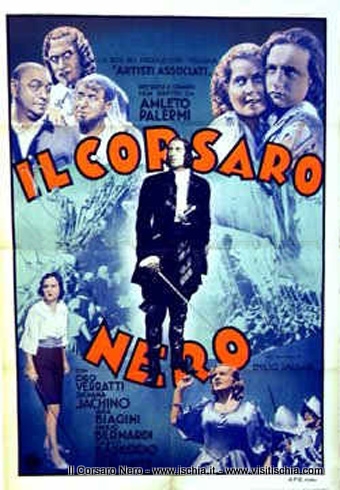
- Title THE BLACK CORSAIR
- Release date(s) 1938
- Genre ADVENTURE FILM
- Running time 125 Min
- Based on THE HOMONYMOUS NOVEL BY EMILIO SALGARI
- Production GIORGIO GENESI PER ARTISTI ASSOCIATI
- Direction AMLETO PALERMI
- Photography: Alberto Spagnoli
- Editing: Alberto Gallitti
- Music: Maurizio De Angelis, Guido De Angelis
Plot
The Ventimiglia brothers - the Black Corsair and the Red Corsair - sail the seas of the West Indies against the governor of Maracaibo. Killed by the Governor, the Red, the Black Corsair decides to settle definitively the tragic game assaulting Maracaibo. While sailing, he captures a Spanish galleon on board of which is, under another name, the governor's daughter. The Corsair is taken by the graces of the girl, but when he discovers his identity leaves her at sea in a lifeboat. The girl is saved and brought back to Maracaibo, where she learns, by the Governor, only to be his adopted daughter. So the Corsaro can marry her when, after a fierce battle, he take Maracaibo and kills the Governor. In a chronicle vintage it reads, "Islanders and foreigners have had a great surprise. In the port of Ischia were firmly moored two majestic ancient ships artistically decorated. A member of the Spanish fleet in 1600, the other belonging to a band of pirates. One hundred shady figures of pirates, after taking possession of the premises of the Office of the Stranger and establish the headquarters, turned boldly to the country. Whites, blacks, Japanese, tanned by the sea, restless eyes, face horribly scarred, armed to the teeth with rifles, pistols, swords, daggers, axes and hammers. Pushing guns and mortars, carried boxes and appliances. Islanders and tourists marveled at what was happening, almost been related the incident with the piratical exploits of past centuries. After a few hours of loss, the calm has returned to Port of Ischia. The pirates came just to make a great Italian film, The Black Corsair».




More Articles...
- Castello Aragonese
- Village of Serrara
- Village of Sant'Angelo
- Village of Campagnano
- Village of Forio
- Tower of Panza
- Tower of Casa Patalano
- Quattrocchi Tower
- The Cigliano Tower
- Costantina Tower
- Maschio Tower or of San Vito
- The Torone
- Tower of Vico Schiano
- Tower of via Morgera
- The Nacera Tower
- The Baiola Tower
- Mezza Torre
- The Torrione
- Chiesa di Sant'Alfonso
- Parrocchia di San Giorgio
- Maria SS.Madre della Chiesa
- Chiesa di San Giovanni Battista
- Chiesa Santa Maria la Porta
- Chiesa di S. Giuseppe e S. Anna
- Chiesa di San Sebastiano Martire
- Chiesa SS.Trinità al Cretaio
- Chiesa della Natività della Madonna
- Chiesa di San Rocco
- Chiesa S. Maria di Costantinopoli
- Chiesa Madonna del Carmine
- Parocchia Santa Maria Maddalena
- Chiesa Santa Maria della Pietà
- Chiesa del Buon Consiglio
- Convento e Chiesa di San Gabriele
- Parrocchia S. Antonio da Padova
- Chiesa San Giuseppe (Villa Joseph)
- Chiesa dell'Immacolata
- S.Maria dei Suffragi (Purgatorio)
- Chiesa del Purgatorio
- San Francesco di Paola
- San Gaetano
- San Carlo Madonna della Libera
- Basilica di Santa Maria di Loreto
- Arciconfrater. Maria SS. Visitapoveri
- Chiesa di San Francesco d'Assisi
- Santa Maria del Soccorso
- Chiesa di San Vito
- Parrocchia di San Sebastiano
- Santa Maria al Monte
- Parrocchia di San Michele
- Parrocchia S. Francesco Saverio
- Chiesa di Santa Lucia
- Parrocchia di San Leonardo
- Arciconfraternita SS. Annunziata
- Madonna delle Grazie in S. Gennaro
- Oratorio dell’Assunta
- Santa Maria delle Grazie (S. Pietro)
- Cattedrale Santa Maria dell'Assunta
- Congrega S.Maria di Costantinopoli
- Chiesa dello Spirito Santo
- Chiesa e convento di Sant'Antonio
- Chiesa dell'Addolorata
- Eremo di San Girolamo
- Parrocchia di Portosalvo
- Chiesa di Sant'Alessandro
- Chiesa di San Ciro
- Chiesa del Buon Pastore
- Parr. S.Domenico SS. Annunziata
- Chiesa di San Domenico
- Chiesetta Sant' Anna
- Parrocchia di Santa Restituta
- Parrocchia Santa Maria delle Grazie
- Chiesa dell'Assunta
- Chiesa di San Giuseppe
- Chiesa dell'Annunziata
- Chiesa Sant'Anna
- Parrocchia S.Maria della Mercede
- Chiesa di San Nicola
- Parrocchia di San Michele Arcangelo
- Parrocchia S.Maria del Carmine
- Chiesa di Sant'Antonio
- Chiesa dell'Assunta e S. Ciro Martire
- Chiesa della Natività di Maria SS.
- Chiesa Maria SS. Immacolata
- Parrocchia di S. Antonio Abate
- Santa Maria del Carmine
- SS. Crocifisso
- Chiesina delle Rose
- La Mortella museum
- Castello Aragonese
- Santa Restituta Museum
- Villa Arbusto Museum
- Cetacean Section Villa Arbusto
- Museo Diocesano
- Museo del Mare
- Museo delle Armi
- Michelangelo Tower
- Museo La Casa Greca
- Museo del Contadino
- Il Torrione museum
























































































































































































































































































































































